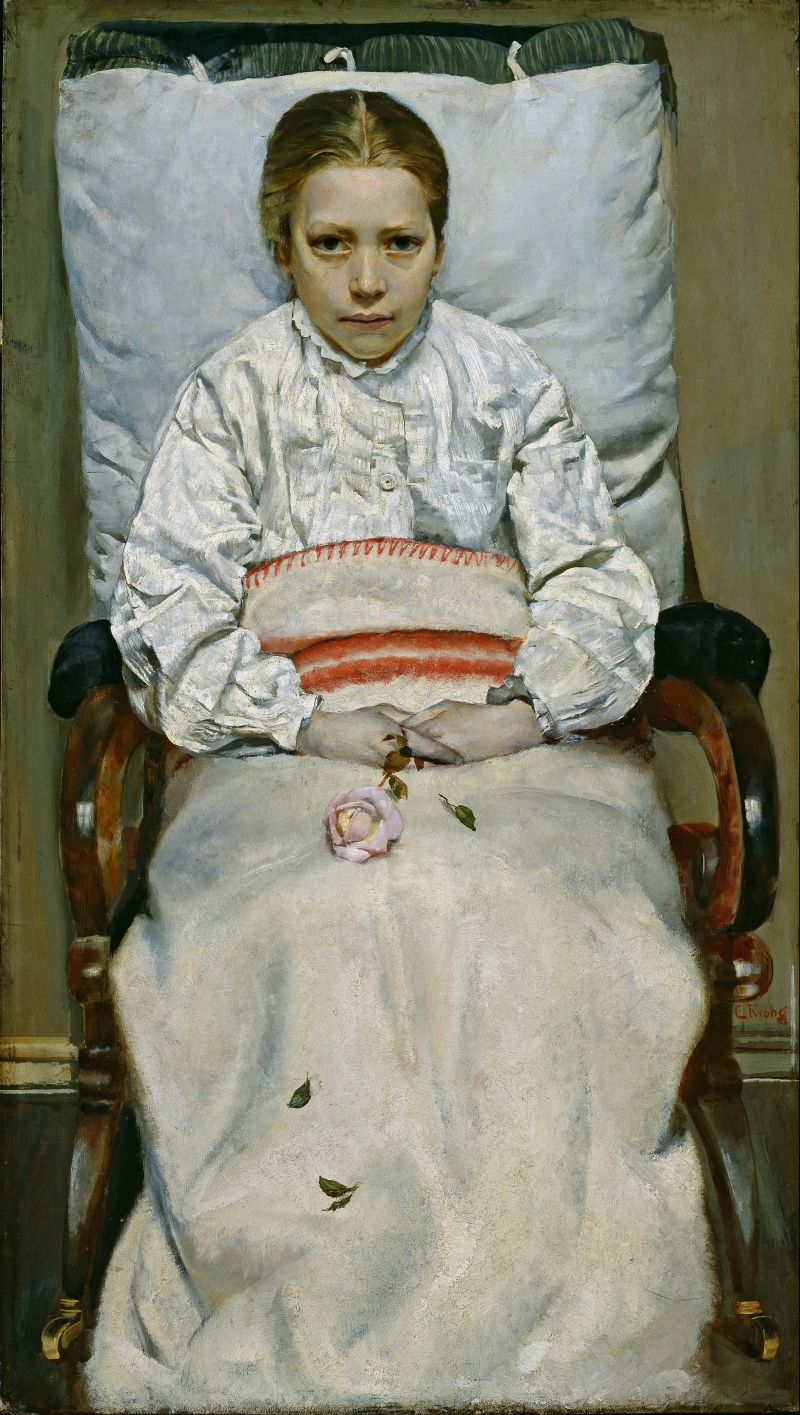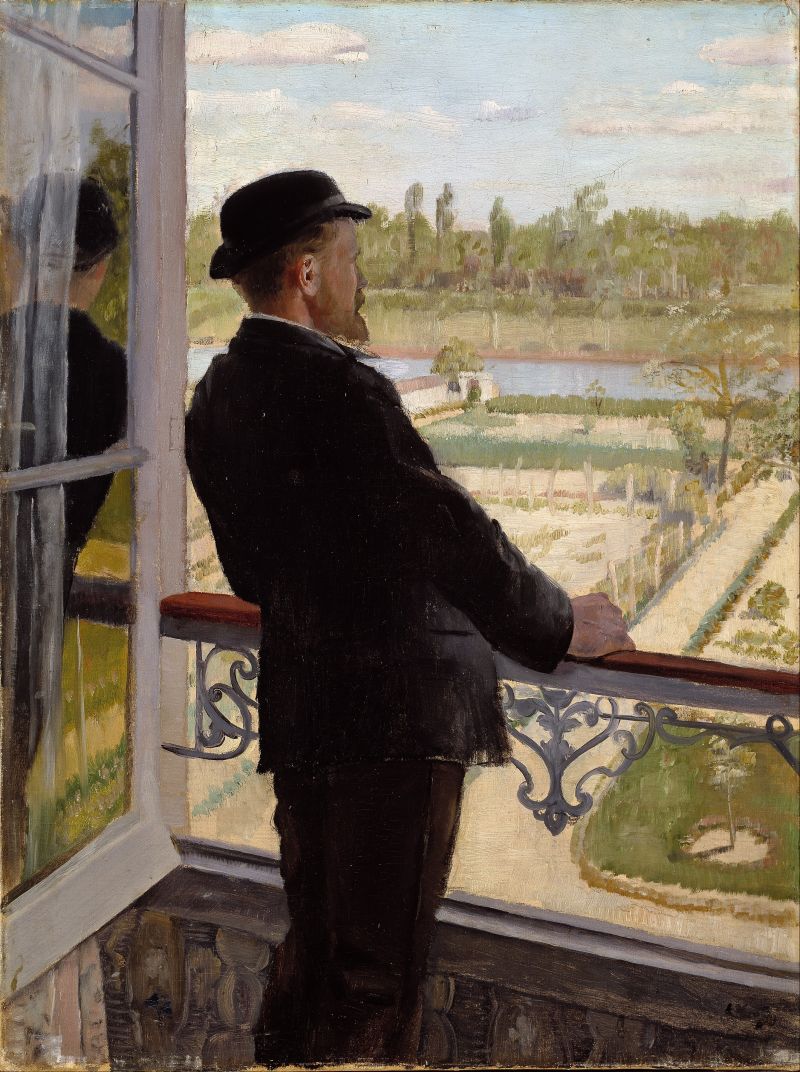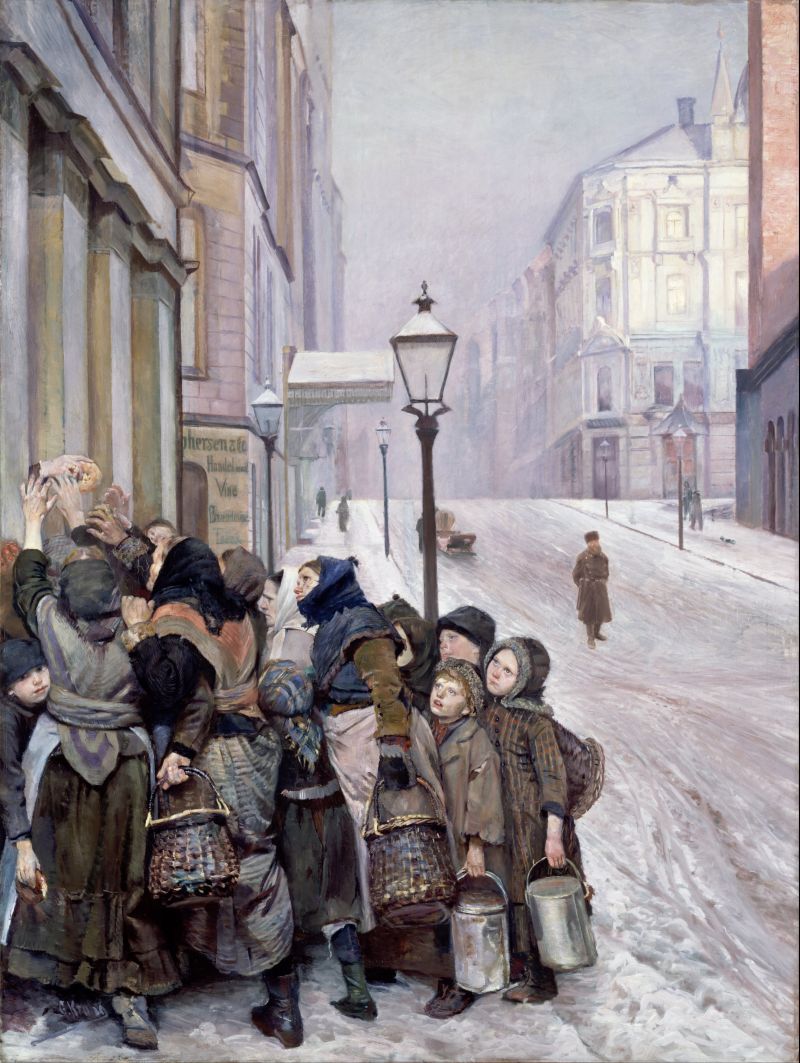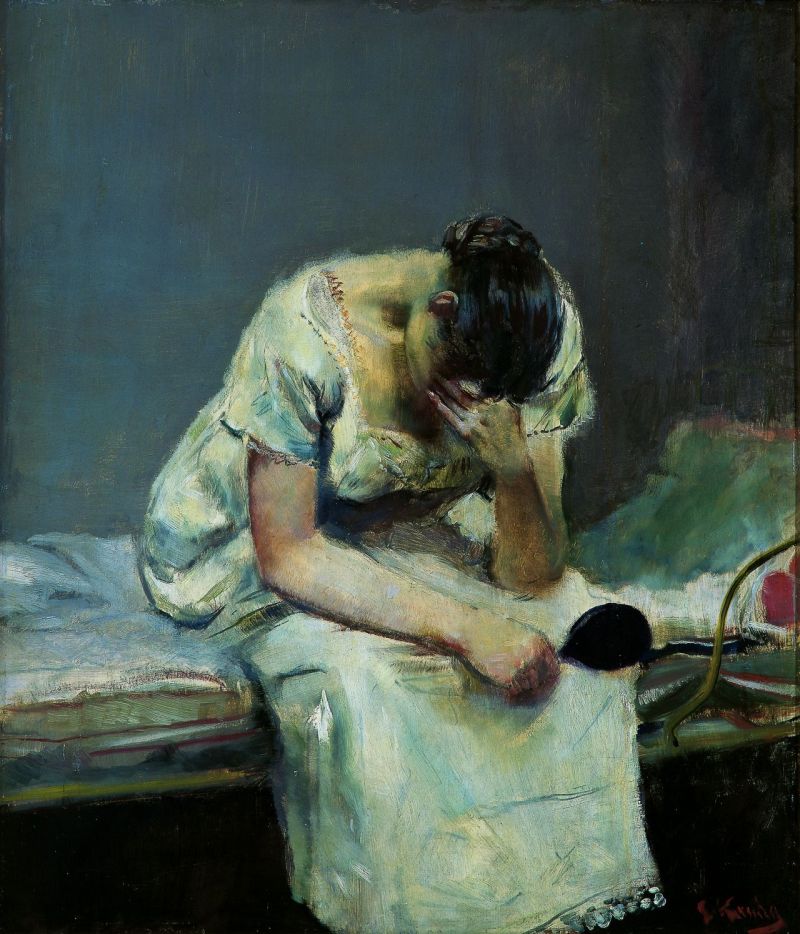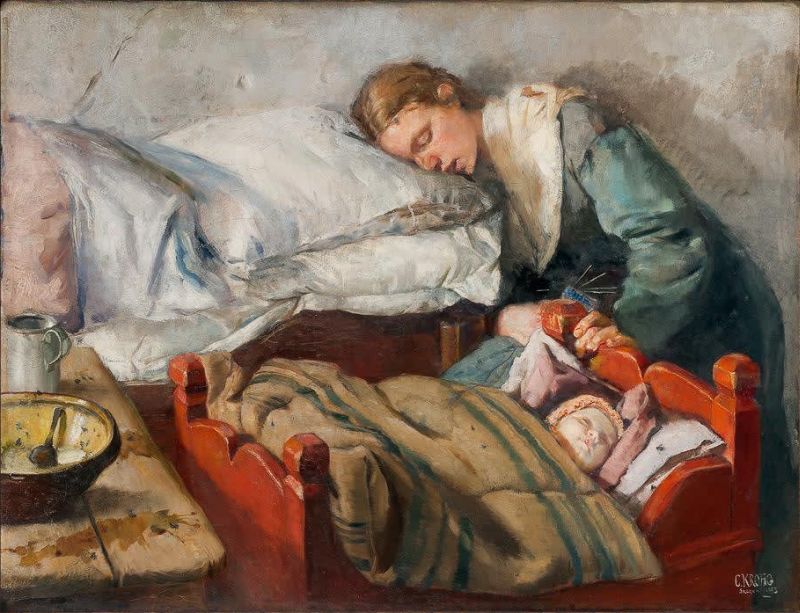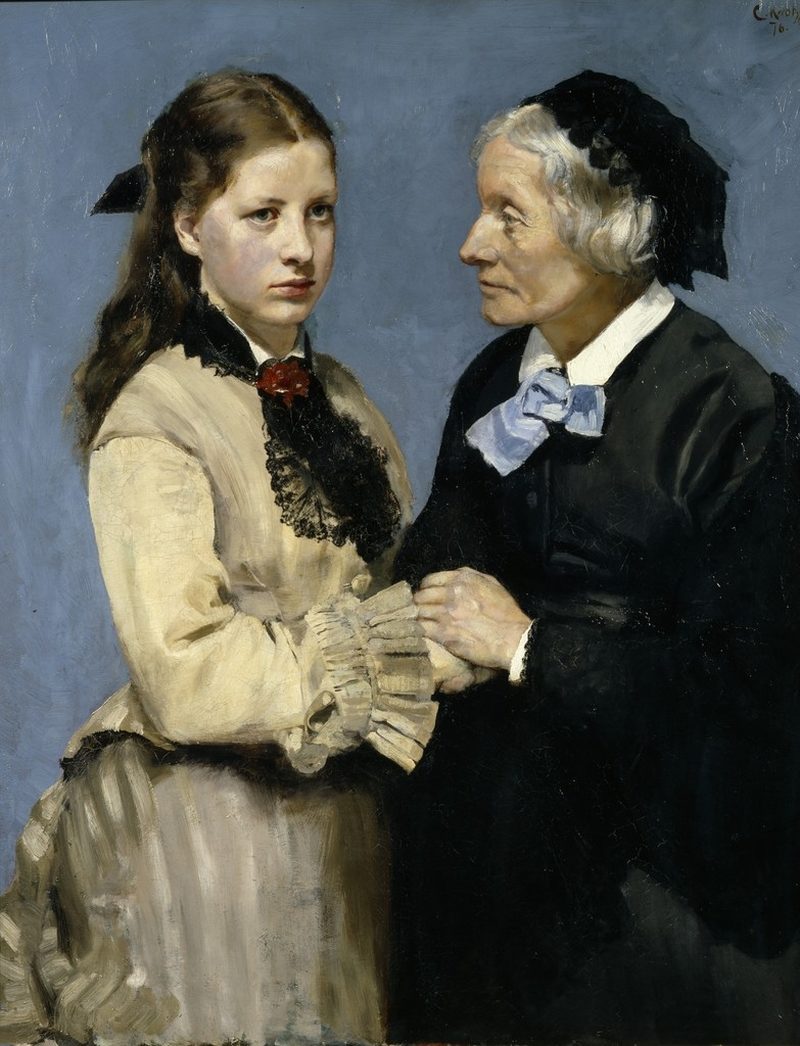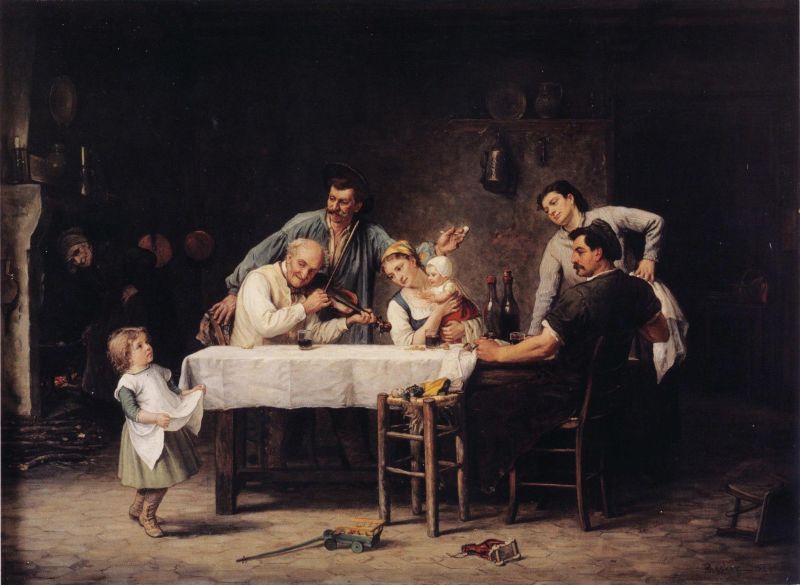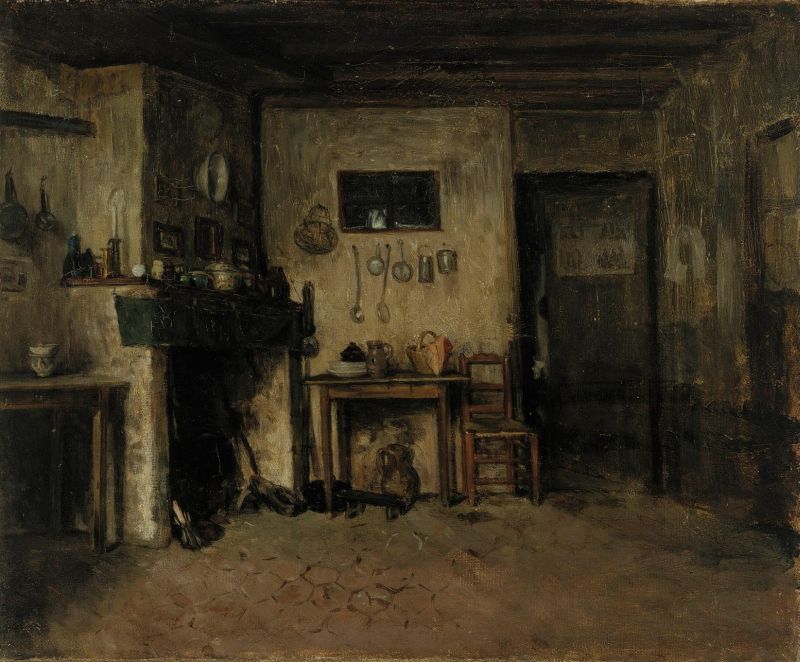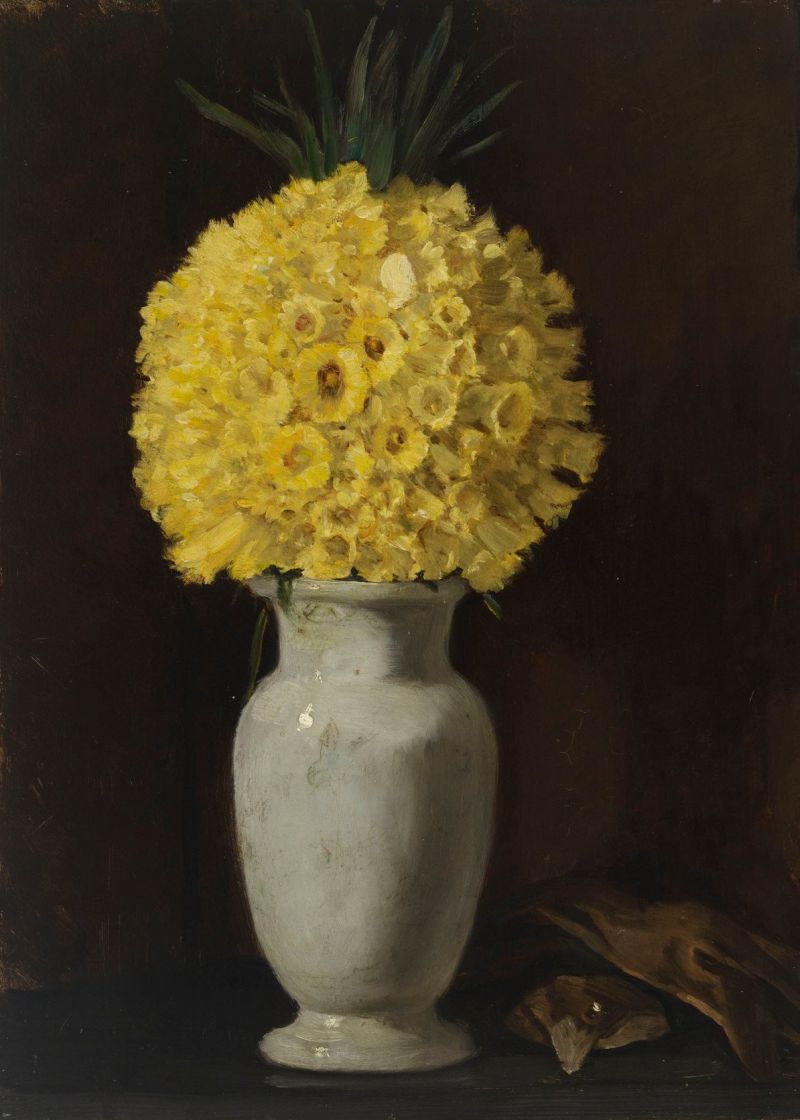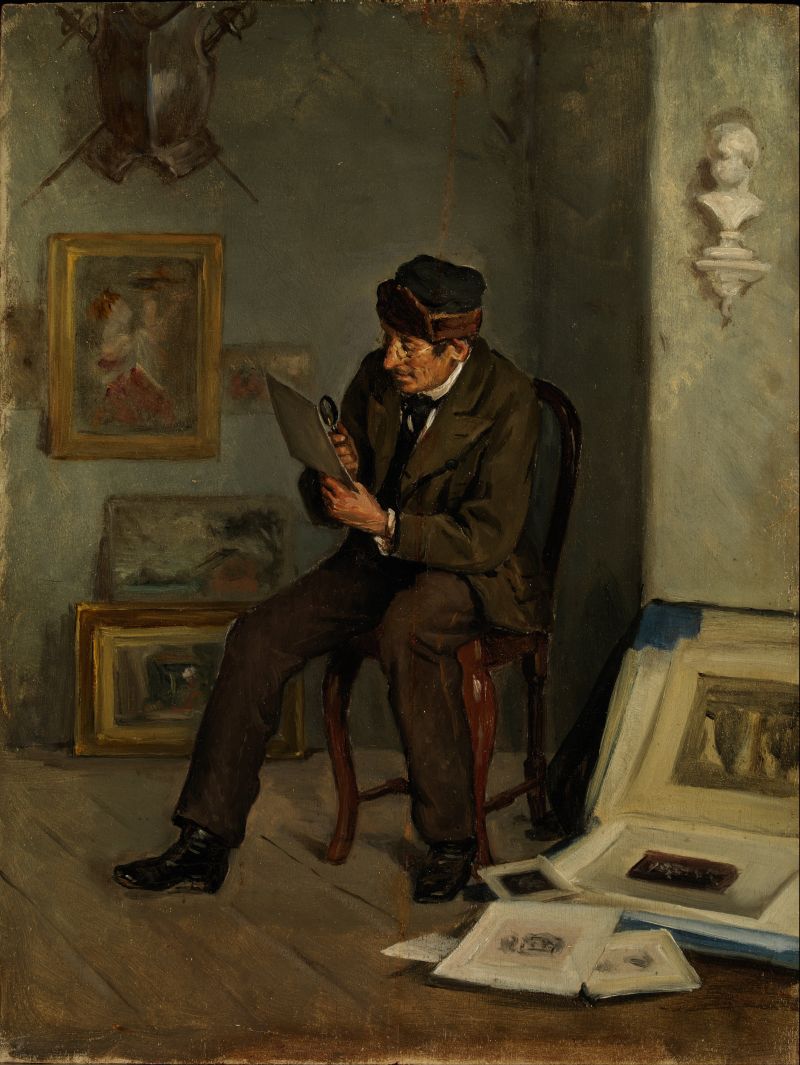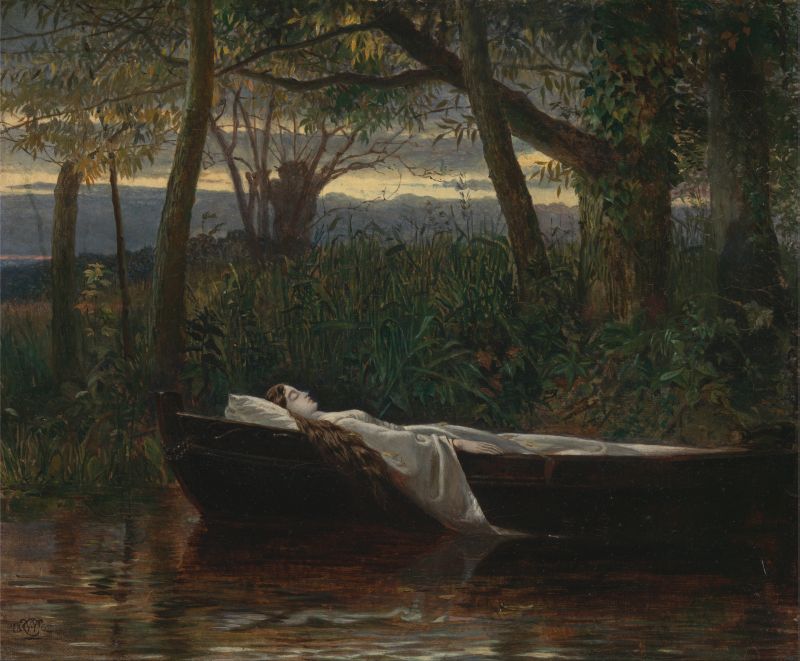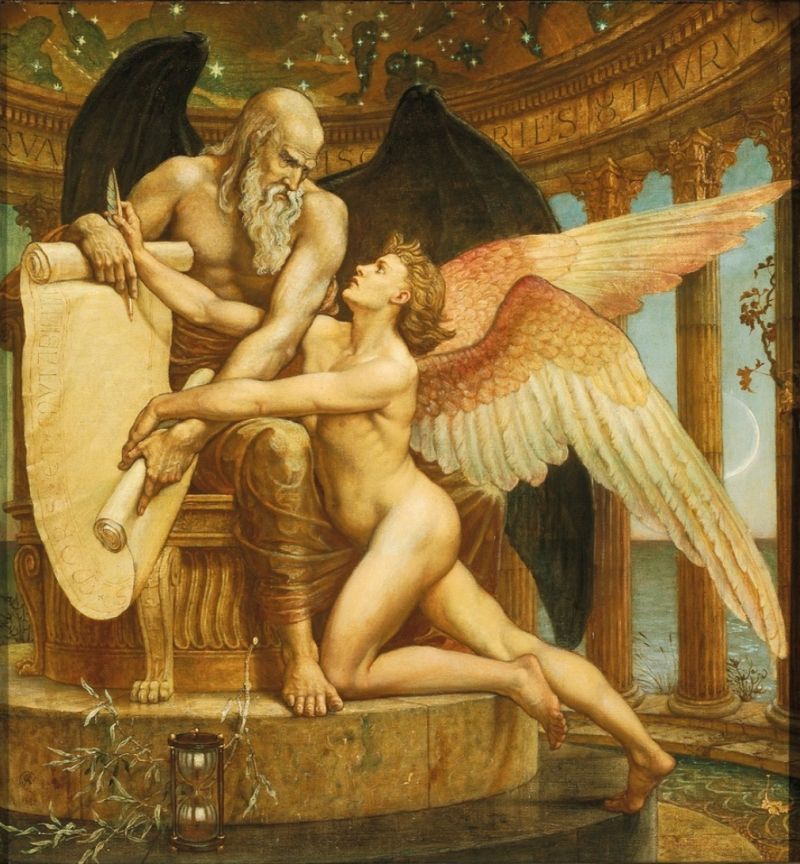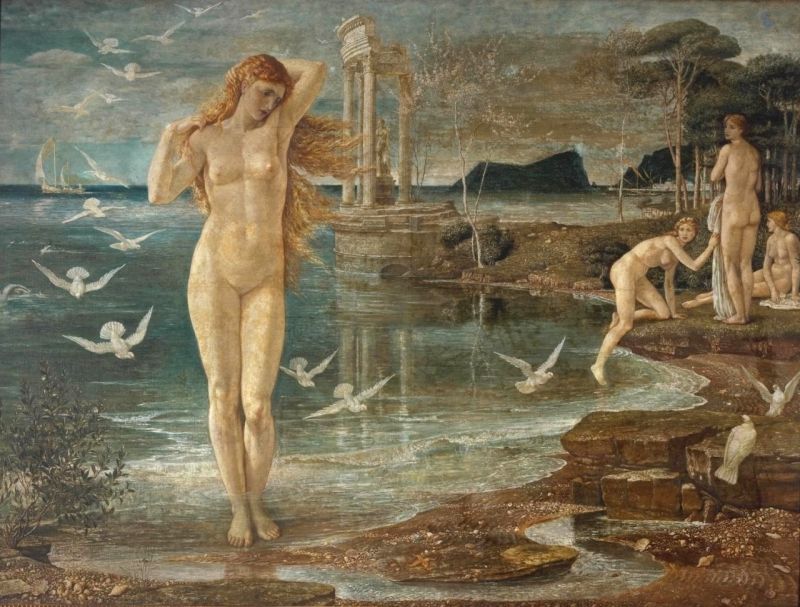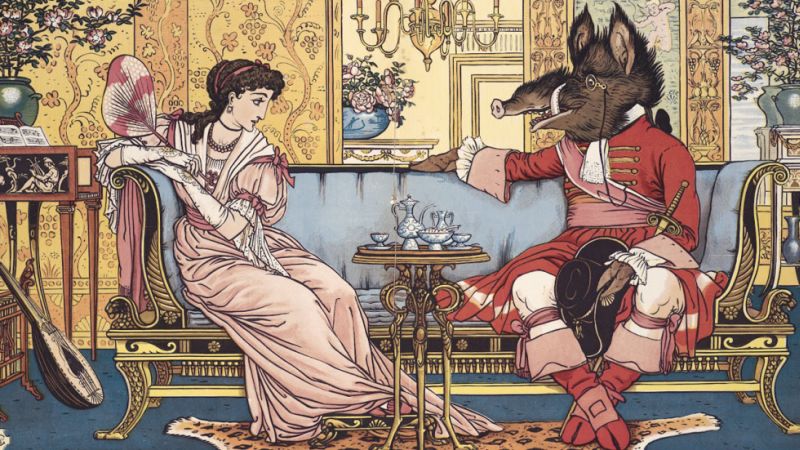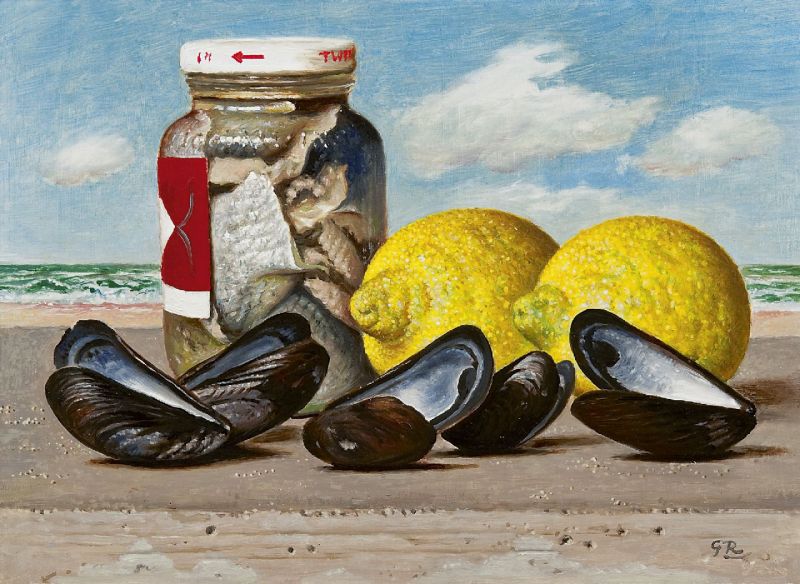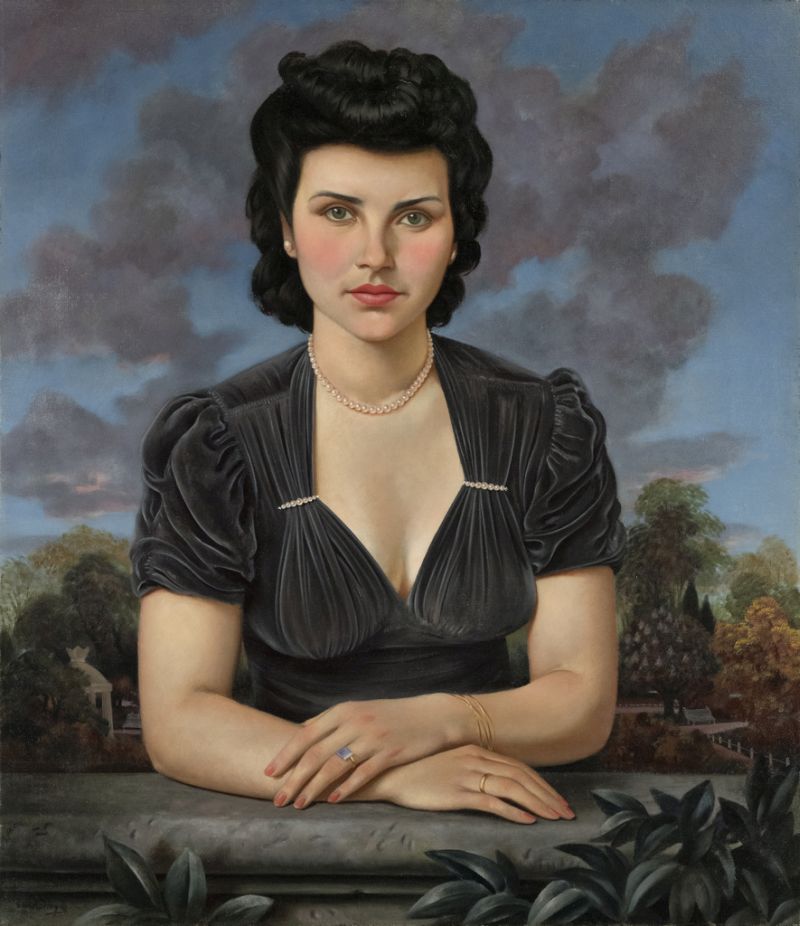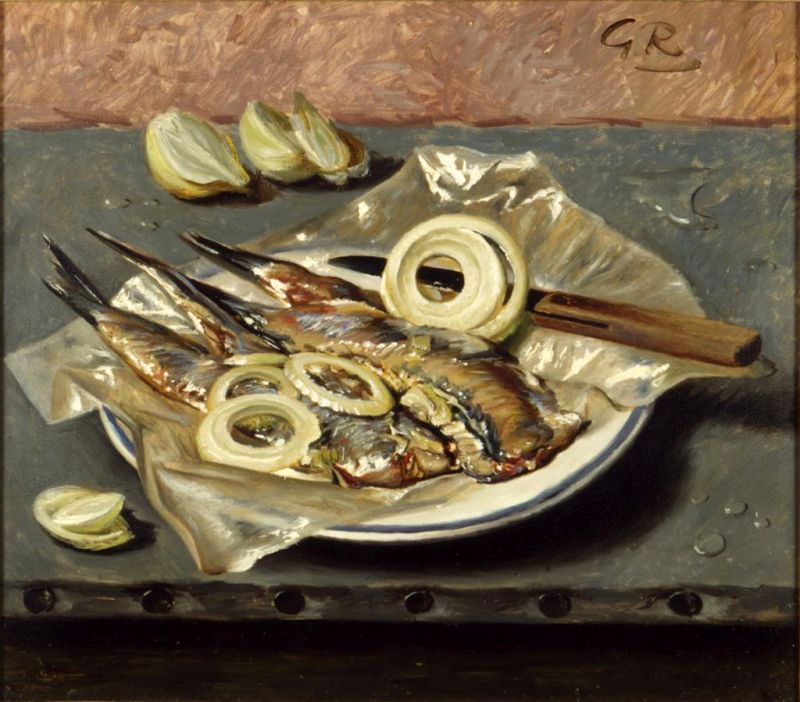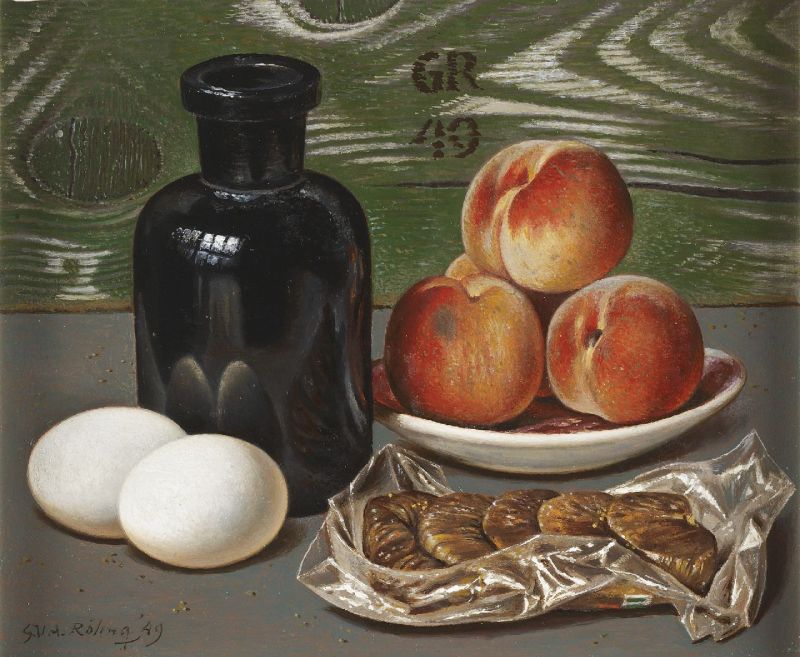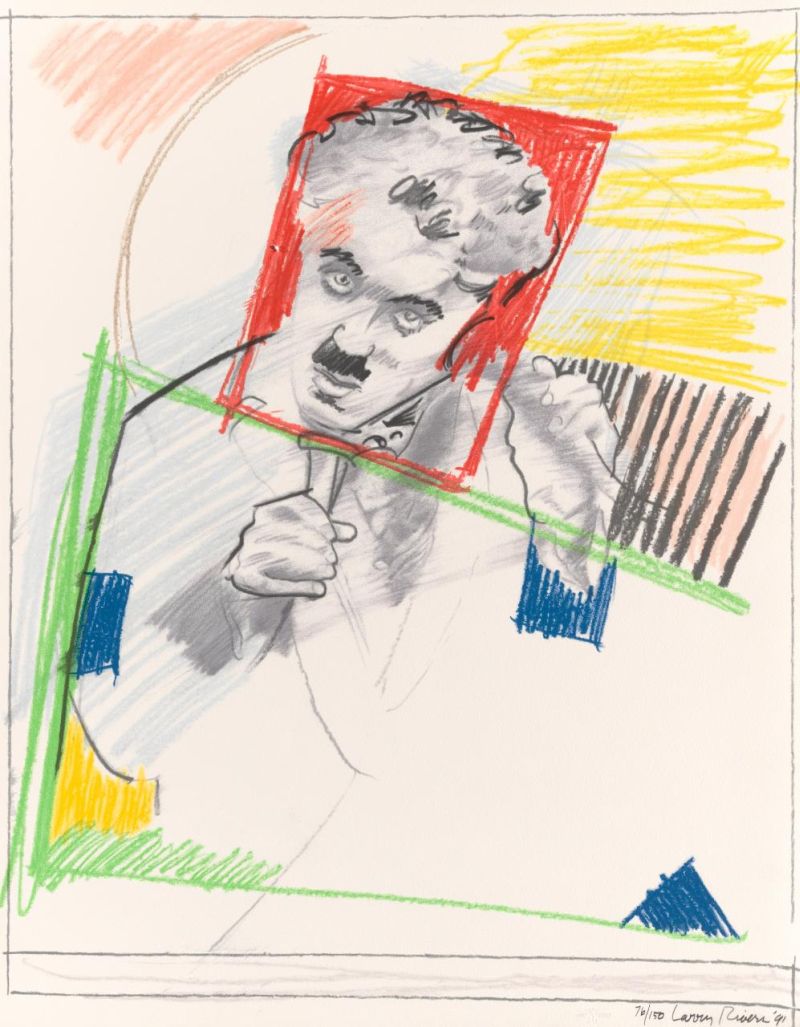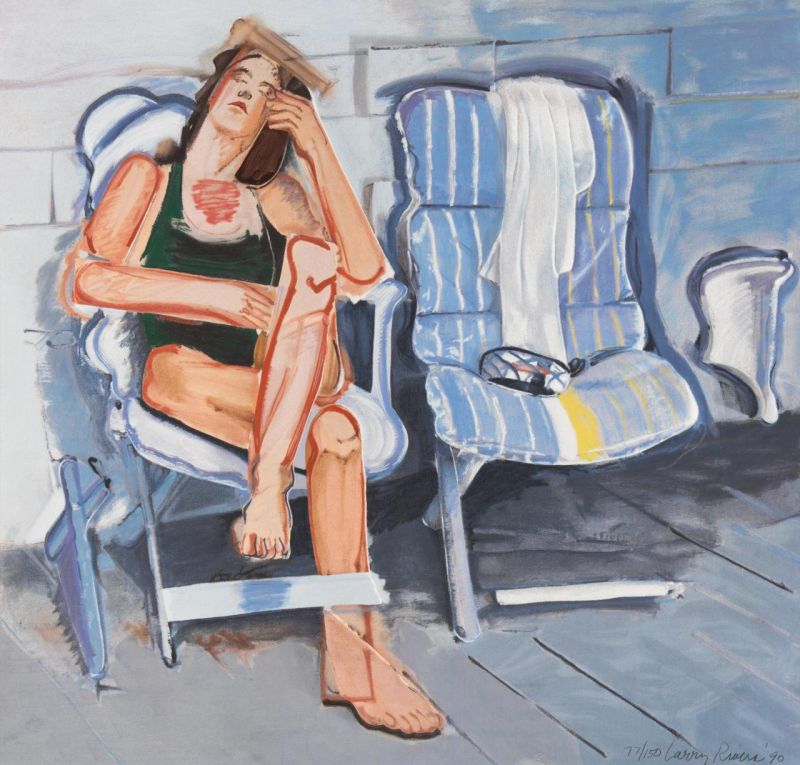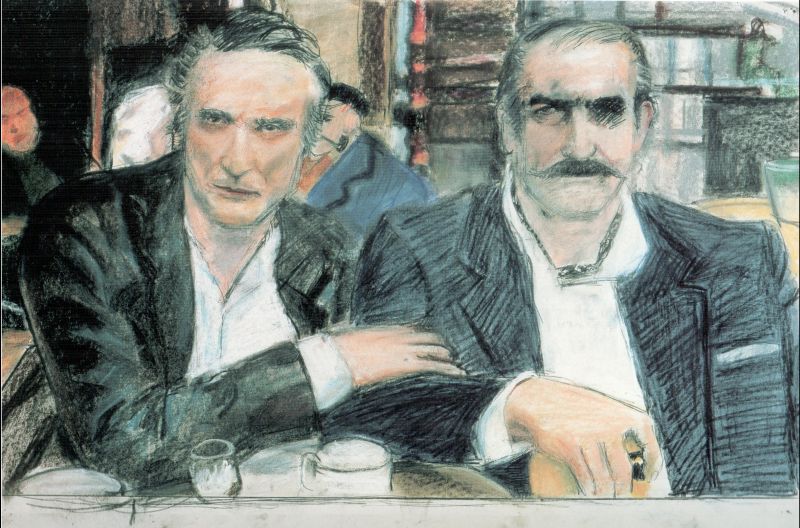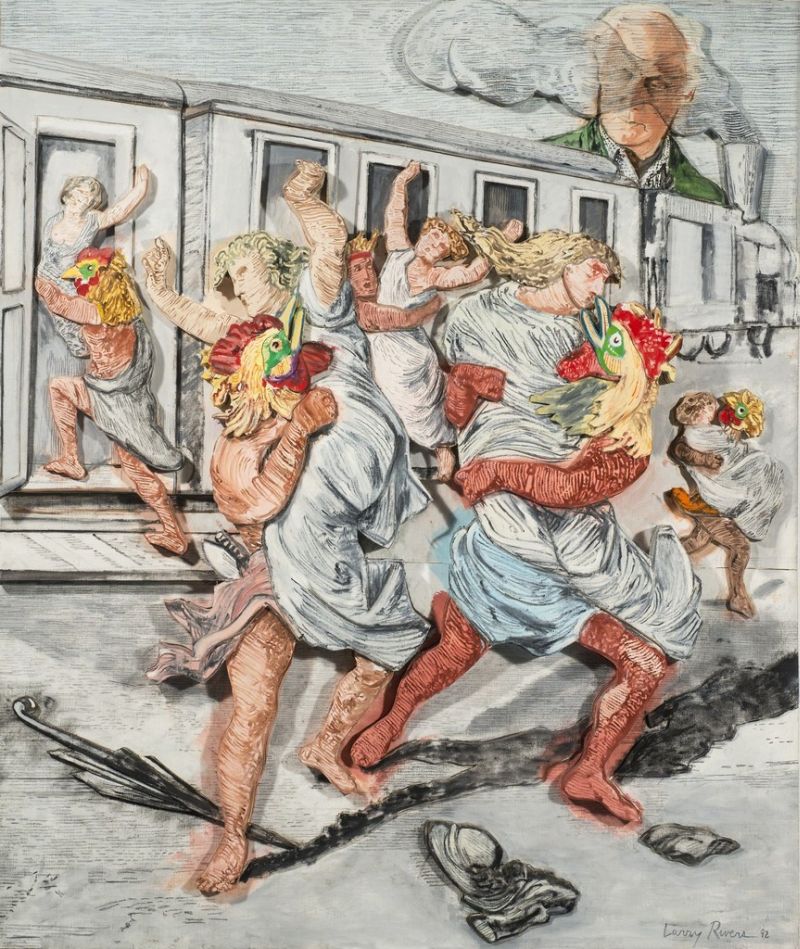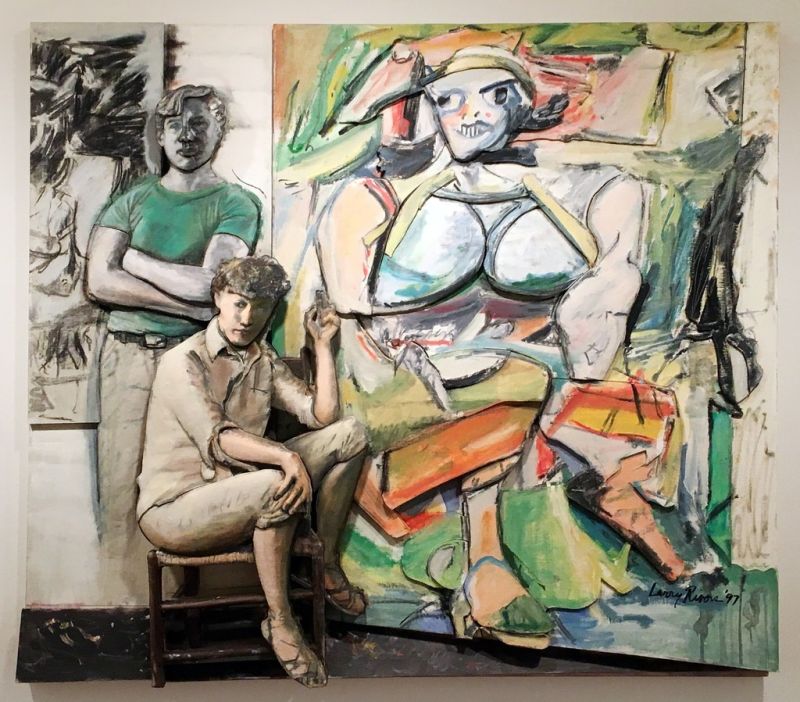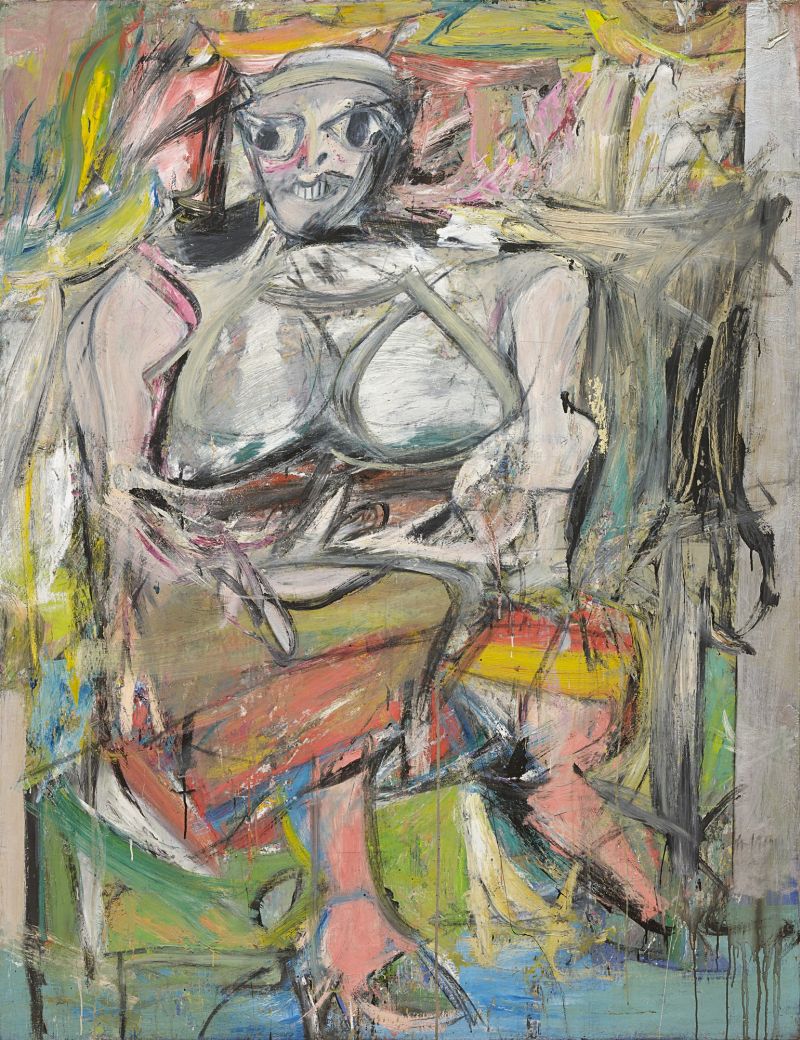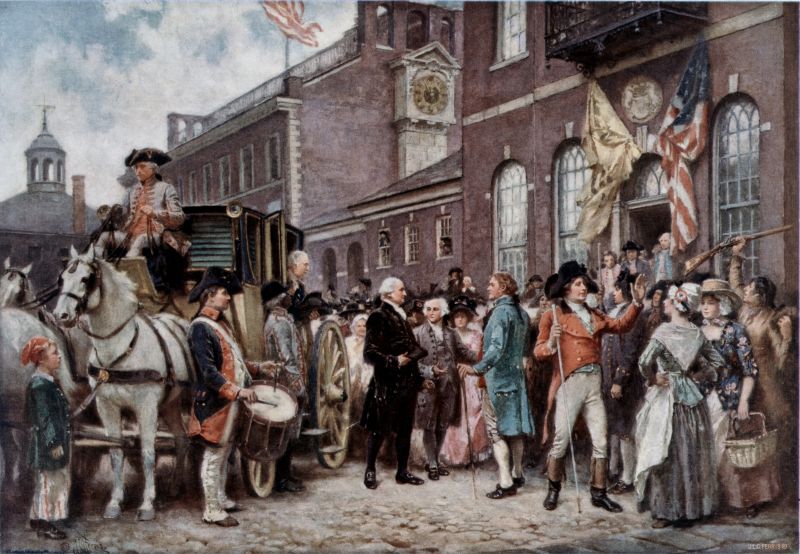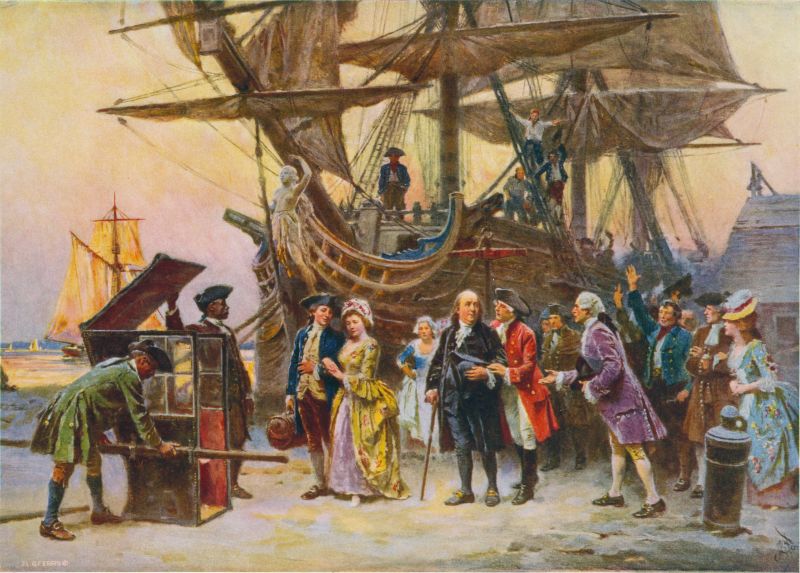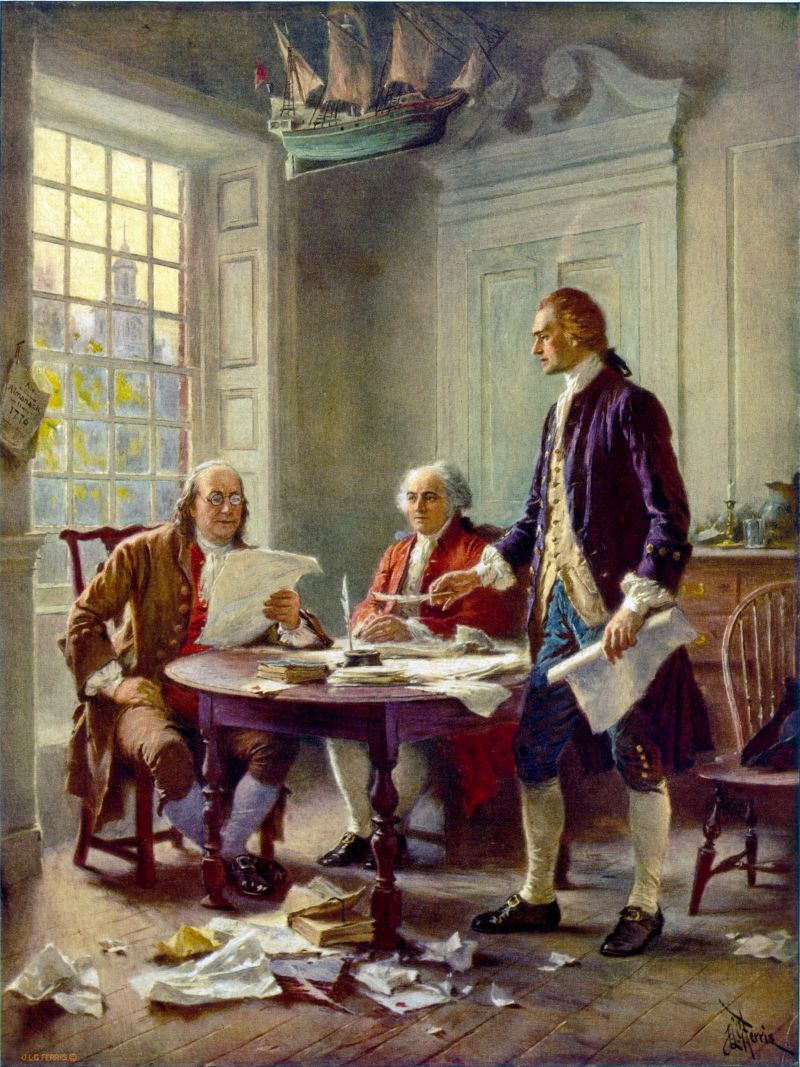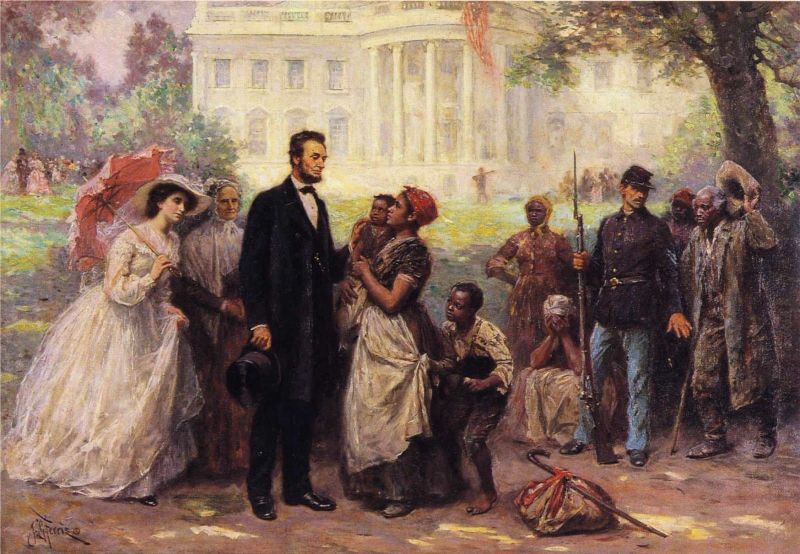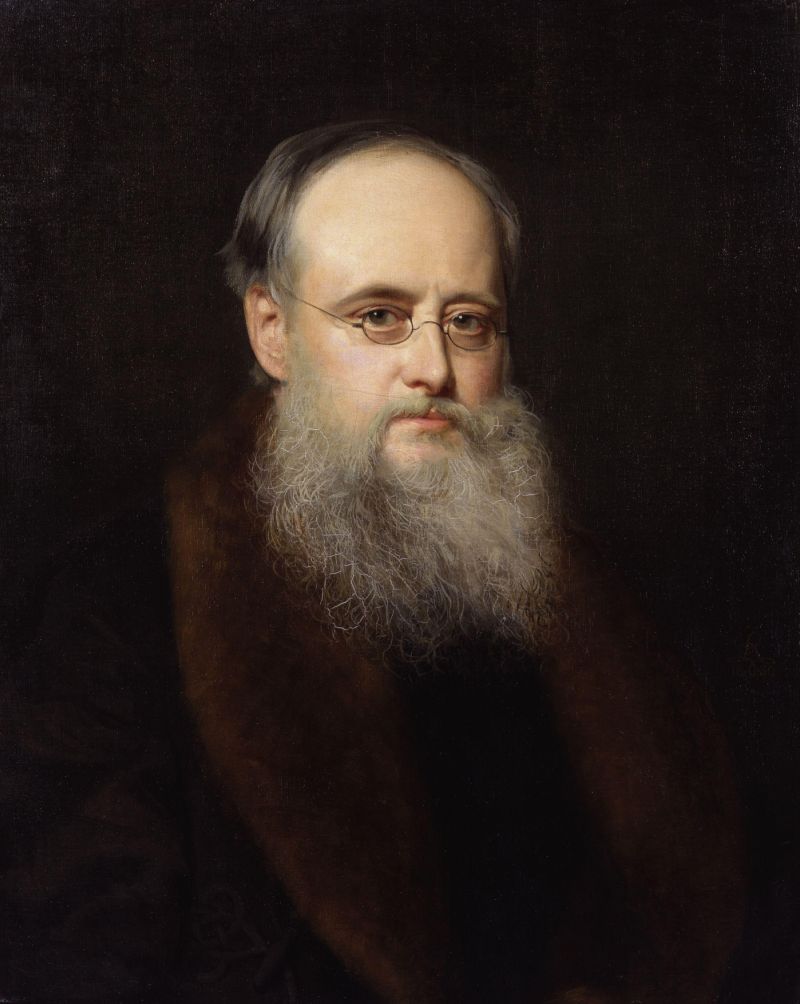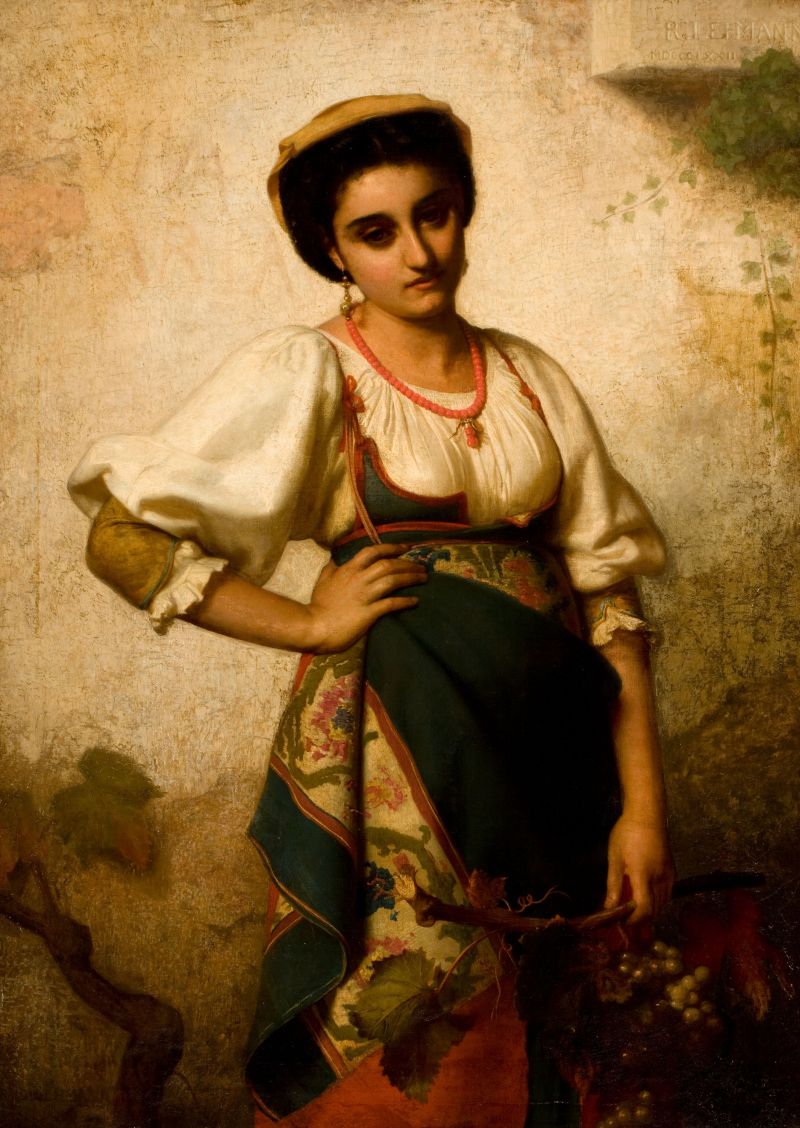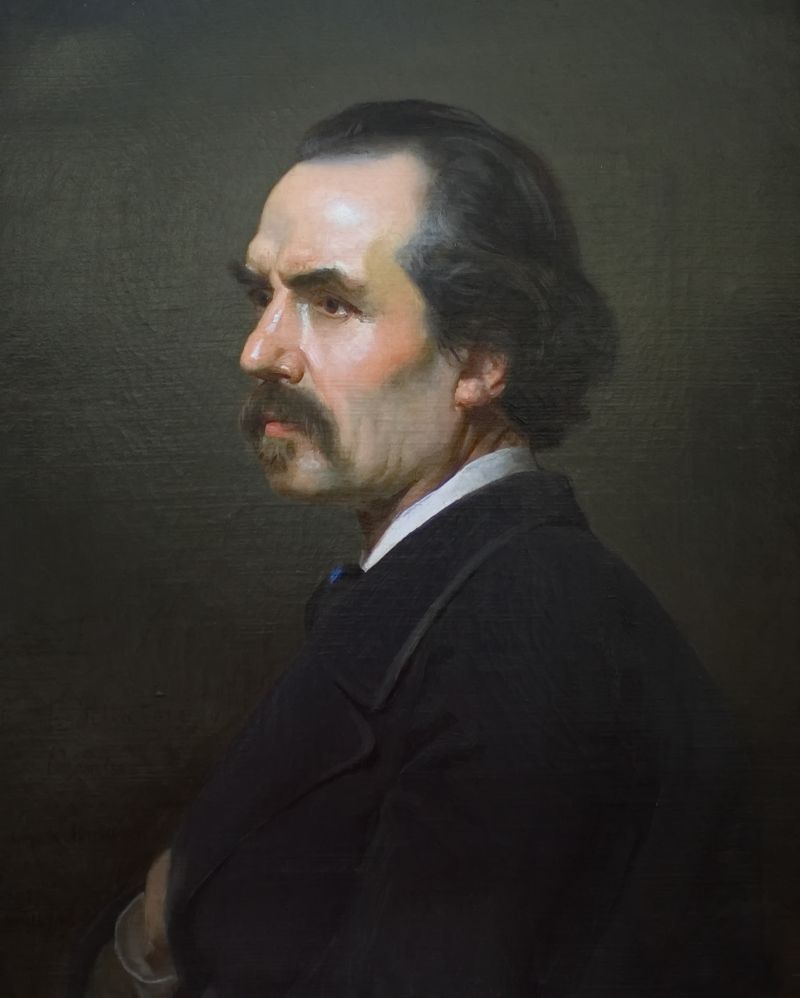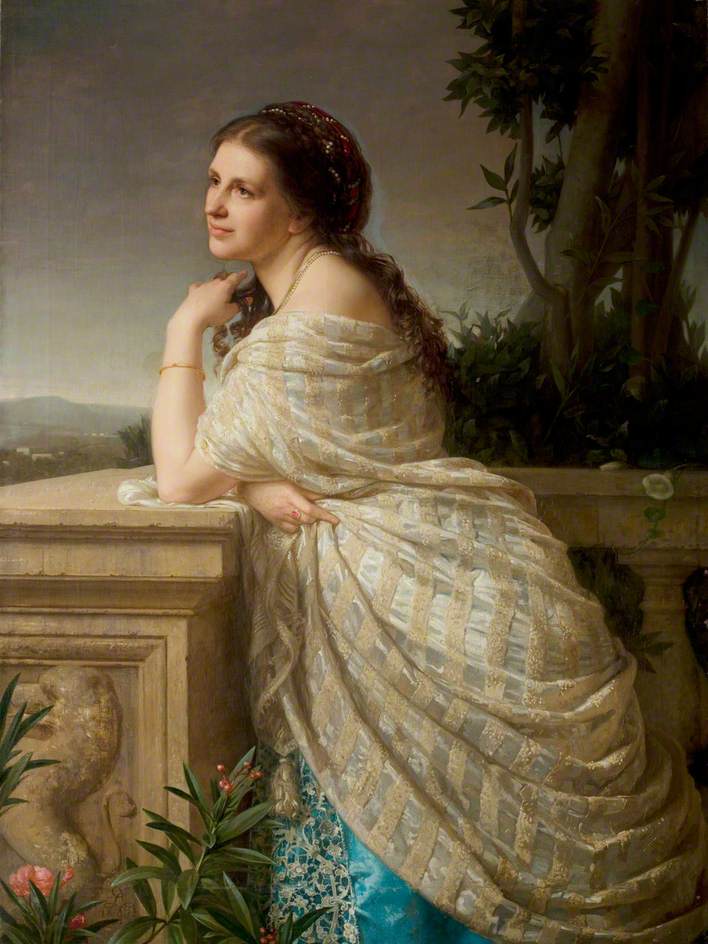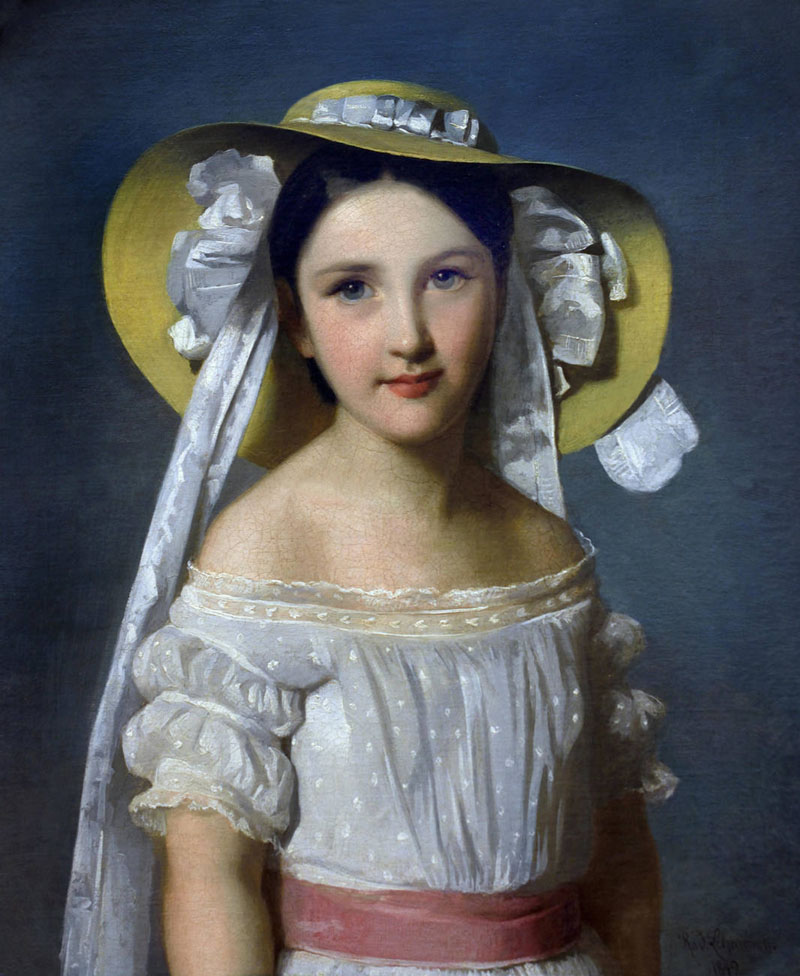_________________________________________________________
El 13 de Agosto es el cumple de
Christian Krohg, pintor naturalista, ilustrador, autor y periodista noruego, nacido en 1852 en Vestre Aker (hoy Oslo). Fue director y el primer profesor de la Academia Noruega de las Artes entre 1909 y 1925.
Desde 1861 asistió a la escuela Hartvig Nissen. Su padre le había pedido que siguiera una carrera legal. Krohg estudió derecho en la Universidad de Oslo (entonces Christiania) graduándose en 1873. Durante 1869-70, también estudió en la escuela de arte de Johan Fredrik Eckersberg en Lille Grensen en Christiania. También se educó en Alemania, primero en la Escuela de Arte de Baden en Karlsruhe bajo la dirección de Hans Gude en 1874. También se formó bajo Karl Gussow a partir de 1875. Siguió con sus estudios en la Königliche Akademie en Berlín, a partir de 1875 y hasta 1878.
"Chica enferma / Sick Girl", óleo sobre panel / oil on panel, 58 x 102 cm., 1880-81
Nasjonalgalleriet / Galería Nacional (Oslo, Noruega / Norway). GAP
Recibió una asignación para viajes del gobierno durante 1877-78 y en 1881. En 1879, con el apoyo del artista Frits Thaulow, visitó la colonia de artistas de Skagen. Volvió allí en 1882-84 y 1888. A través de su residencia periódica futura en Skagen, influiría en otros artistas, como Anna y Michael Ancher, y brindó su apoyo inicial a Edvard Munch.
Krohg trabajó en París desde 1881 hasta 1882. Inspirado por las ideas de los realistas, eligió motivos principalmente de la vida cotidiana, a menudo sus lados más oscuros o socialmente inferiores. Particularmente bien conocidos son sus cuadros de prostitutas. La prostitución también es el tema de su novela Albertine (1886), que causó un escándalo cuando se publicó por primera vez y fue confiscada por la policía. El estilo de Krohg lo convirtió en una figura destacada en la transición del romanticismo al naturalismo.
"Retrato del pintor sueco / Portrait of the Swedish PainterKarl Nordström"
Óleo sobre lienzo / oil on canvas, 46,5 x 61 cm., 1882
Nasjonalgalleriet / Galería Nacional (Oslo, Noruega / Norway). GAP
Fue el fundador y editor en jefe de la revista Kristiania Bohemian, Impressionisten desde 1886 hasta 1890. Luego se convirtió en periodista del periódico Verdens Gang de Oslo de 1890 a 1910. También estuvo asociado con Politiken 1893-1894.
Enseñó en la Académie Colarossi en París desde 1902 hasta 1909. Más tarde se convirtió en profesor y director en la Academia Noruega de las Artes (Statens Kunstakademi) desde 1909 hasta 1925, año en que falleció.
Hay colecciones notables de arte de Christian Krohg en el Museo Nacional de Arte, Arquitectura y Diseño en Oslo y en el Museo Skagens en Dinamarca.
"Lucha por la supervivencia / Struggle for Survival"
Óleo sobre lienzo / oil on canvas, 300 x 225 cm., 1888-89.
Nasjonalgalleriet / Galería Nacional (Oslo, Noruega / Norway). GAP
On August 13 is the birthday of
Christian Krohg, Norwegian naturalist painter, illustrator, author and journalist, born in 1852 in Vestre Aker (now Oslo). He was the director and served as the first professor at the Norwegian Academy of Arts from 1909 to 1925.
From 1861, he attended Hartvig Nissen School. His father had asked him to pursue a legal career. Krohg studied law at the University of Oslo (then Christiania) graduating in 1873. During 1869–70, he had also studied at the art school of Johan Fredrik Eckersberg at Lille Grensen in Christiania. He was additionally educated in Germany, first at the Baden School of Art in Karlsruhe under Hans Gude in 1874. He also trained under Karl Gussow from 1875. He followed with study at the Königliche Akademie in Berlin from 1875 to 1878.
"Madeleine", óleo sobre lienzo / oil on canvas, 1883.
Lillehammer kunstmuseum (Bergen, Noruega / Norway). Wikimedia Commons
He received a government travel allowance during 1877–78 and in 1881. In 1879, on the encouragement of artist Frits Thaulow, he visited the Skagen artists colony. He returned to Skagen in 1882–84 and 1888. Through his periodic future residence at Skagen, he would influence other artists including Anna and Michael Ancher and provided early support to Edvard Munch.
Krohg worked in Paris from 1881 to 1882. Inspired by the ideas of the realists he chose motives primarily from everyday life – often its darker or socially inferior sides. Particularly well known are his pictures of prostitutes. Prostitution is also the subject of his novel Albertine (1886), which caused a scandal when first published, and was confiscated by the police. Krohg’s style made him a leading figure in the transition from romanticism to naturalism.
"Sovende mor med barn / Madre dormida con niño / Sleeping Mother With Child"
Óleo sobre lienzo / oil on canvas, 1883
Colección / Collection Rasmus Meyer (Noruega / Norway). Link
Krohg was the founding and editor-in-chief of the Kristiania Bohemian journal, Impressionisten from 1886 until 1890. He then became a journalist for the Oslo newspaper Verdens Gang from 1890 to 1910. Christian Krohg was also associated with Politiken 1893-1894.
He taught at Académie Colarossi in Paris from 1902 until 1909. Later he became a professor-director at the Norwegian Academy of Arts (Statens Kunstakademi) from 1909 until 1925, the year he died.
There are notable collections of art by Christian Krohg in the National Museum of Art, Architecture and Design in Oslo and at Skagens Museum in Denmark.
"Et farvel / El adiós / Farewell", óleo sobre lienzo / oil on canvas, 100,5 x 83 cm., 1876
Göteborgs Konstmuseum (Goteburgo, Suecia / Göteborg, Sweden)
Christian Krohg en "El Hurgador" / in this blog: [Manos a la obra (XVII)]

El 14 de Agosto es el cumple de
Adolf von Becker, pintor de género y profesor de arte finlandés de ascendencia alemana, nacido en Helsinki en 1831. Fue uno de los primeros artistas finlandeses en estudiar en París.
Comenzó sus estudios artísticos en la recién fundada Escuela de Dibujo de la Sociedad de Arte Finlandesa. También estudió leyes. En 1853 completó su licenciatura en derecho y se convirtió en aprendiz en el Tribunal de Apelaciones de Turku. Mientras estuvo allí, continuó haciendo expediciones de dibujo al campo y conoció a Robert Wilhelm Ekman, quien lo animó a estudiar en la Real Academia Danesa de Bellas Artes. Siguiendo el consejo de Ekman, se graduó allí en 1856.
En 1858 recibió una recomendación para estudiar con Thomas Couture en París, pero se vio abrumado por la enorme y cosmopolita ciudad y en cambio se inscribió en la Kunstakademie de Düsseldorf. El curso le resultó decepcionante, por lo que regresó a París para volver a intentarlo. Cuando Couture cerró sus estudios de enseñanza en 1860, Becker presentó la solicitud y fue aceptado en la École des Beaux-Arts, donde estudió con Felix-Joseph Barrias, Ernest Hébert, Leon Cogniet y Leon Bonnat.
En 1864 viajó a España con una beca e hizo copias de los Viejos Maestros en Madrid. Más tarde visitó Italia, y a su regreso a Francia alquiló un estudio a las afueras de París a Alfred Wahlberg, a quien había conocido en Düsseldorf. En 1868 regresó a Finlandia para tomar un puesto en la escuela de dibujo de la Universidad de Helsinki, reemplazando al difunto Magnus von Wright. Fue nombrado profesor allí en 1879.
"Päivällisen jälkeen / Después de la cena / After the Dinner"
Óleo sobre lienzo / oil on canvas, 112 x 142 cm., 1877.
Palacio Presindencial, Helsinki, Finlandia / Presidential Palace, Helsinki, Finland. Wikimedia Commons
Mientras tanto, en 1872, había comenzado su propia escuela privada de dibujo, probablemente para poner modelos desnudos a disposición de sus alumnos. Era conocido como un maestro muy estricto, por lo que esta también puede haber sido una forma de tener más control sobre el plan de estudios. Los estudios allí fueron, sin embargo, interrumpidos por sus frecuentes viajes. Entre sus alumnos más conocidos se encuentran Helene Schjerfbeck, Elin Danielson-Gambogi, Helena Westermarck y Akseli Gallen-Kallela.
A medida que el siglo XIX llegaba a su fin, fue criticado cada vez más por la generación más joven de artistas por ser demasiado conservador. Esto llegó a un punto crítico en la Exposición Universal en 1889, cuando la generación anterior, representada por Becker, Walter Runeberg y Berndt Lindholm, entró en abierta confrontación con una facción más joven liderada por Ville Vallgren y Albert Edelfelt. Poco después se produjeron ciertos desacuerdos entre él y la Asociación de Arte de Finlandia y comenzó a exhibir de forma independiente.
Se retiró de la Universidad en 1892 y regresó a París. A medida que se hacía mayor descubrió que los inviernos allí eran demasiado fríos, por lo que se mudó a Niza en 1904.
Murió en 1909.
"Sisäkuva ranskalaisesta maalaistalosta / Vista general de una granja francesa /
General View of a French Farm", óleo sobre lienzo / oil on canvas, 39,5 x 47,5 cm.
Kansallisgalleria / Galería Nacional (Helsinki, Finlandia / Finland)
On August 14 is the birthday of
Adolf von Becker, Finnish genre painter and art professor of German descent, born in Helsinki in 1831. He was one of the first Finnish artists to study in Paris.
He began his artistic studies at the newly founded Finnish Art Society Drawing School; he also studied law. In 1853, he completed his law degree and became a trainee at the Court of Appeals in Turku. While there, he continued to make drawing expeditions into the countryside and made the acquaintance of Robert Wilhelm Ekman, who encouraged him to study at the Royal Danish Academy of Fine Arts. He took Ekman's advice and graduated there in 1856.
In 1858, he received a recommendation to study with Thomas Couture in Paris, but was overwhelmed by the huge, cosmopolitan city and left to enroll at the Kunstakademie Düsseldorf instead. The course of study there proved to be disappointing, so he returned to Paris to try again. When Couture closed his teaching studios in 1860, Becker applied to and was accepted at the École des Beaux-Arts, where he studied with Felix-Joseph Barrias, Ernest Hébert, Leon Cogniet and Leon Bonnat.
In 1864, he travelled to Spain on a scholarship and made copies of the Old Masters in Madrid. Later, he visited Italy and, on his return to France, he rented a studio outside Paris from Alfred Wahlberg, who he had met in Düsseldorf. In 1868, he returned to Finland to take a position at the University of Helsinki drawing school; replacing the late Magnus von Wright. He was appointed a Professor there in 1879.
"Kukkakuva / Cuadro de una flor / A Flower Picture"
Óleo sobre lienzo / oil on canvas, 36 x 26,5 cm., 1862.
Kansallisgalleria / Galería Nacional (Helsinki, Finlandia / Finland)
Meanwhile, in 1872, he had started his own private drawing school, probably to make nude models available to his students. He was known as a very strict teacher, so this may have also been a way to gain more control over the curriculum. Studies there were, however, interrupted by his frequent travels. Among his best-known students were Helene Schjerfbeck, Elin Danielson-Gambogi, Helena Westermarck and Akseli Gallen-Kallela.
As the 19th-Century drew to a close, he came under increasing criticism from the younger generation of artists for being too conservative. This came to a head at the Exposition Universelle in 1889, when the older generation, represented by Becker, Walter Runeberg and Berndt Lindholm, came into open confrontation with a younger faction led by Ville Vallgren and Albert Edelfelt. Soon after, disagreements developed between him and the Finnish Art Association and he began to exhibit independently.
He retired from the University in 1892 and returned to Paris. As he grew older, he found the winters there a bit too cold, so he moved to Nice in 1904.
He died in 1909.
"El experto en arte / The Art Expert", óleo sobre lienzo / oil on canvas, 1880-90
EMMA - Espoon modernin taiteen museo / Museo de Arte Moderno (Espoo, Finlandia / Finland). GAP

El 15 de Agosto es el cumple de
Walter Crane, artista e ilustrador de libros inglés nacido en 1845 en Liverpool, Lancashire.
Se le considera uno de los creadores de libros infantiles más influyentes y prolíficos de su generación y, junto con Randolph Caldecott y Kate Greenaway, uno de los principales contribuyentes al tema de la guardería infantil que el género de la literatura ilustrada infantil exhibió en sus etapas de desarrollo a fines del siglo XIX.
La obra de Crane presentó algunos de los comienzos más coloridos y detallados motivos del "niño en el jardín" que caracterizarían muchas rimas e historias infantiles en las décadas siguientes. Formó parte del movimiento Arts and Crafts y produjo una variedad de pinturas, ilustraciones, libros para niños, azulejos de cerámica y otras piezas de artes decorativas. Crane también es recordado por su creación de una serie de imágenes icónicas asociadas con el movimiento socialista internacional.
"La dama de Shalott / The Lady of Shalott"
Óleo sobre lienzo / oil on canvas, 24,1 x 29,9 cm., 1862.
Yale Center for British Art (New Haven, Connecticut, EE.UU./ USA). GAP
Walter Crane fue el segundo hijo del artista Thomas Crane, pintor de retratos y miniaturas. A temprana edad recibió la influencia de la Hermandad pre-Rafaelita, y se interesó por la obra de John Ruskin. Una colección de diseños para ilustrar la obra Lady of Shalott de Tennyson logró la aprobación del grabador William James Linton, de quien Crane fue aprendiz durante tres años, entre 1859 y 1862.
Como grabador de madera tuvo abundantes oportunidades de estudiar la obra de artistas contemporáneos que pasaban por sus manos, entre ellos Dante Gabriel Rossetti, John Everett Millais, Sir John Tenniel y Frederick Sandys, como así mismo de los maestros del renacimiento italiano. Sin embargo su principal influencia fueron los mármoles de Elgin conservados en el Museo Británico.
Un elemento posterior en el desarrollo de su talento consistió en el estudio de impresos coloreados de Japón, cuyos métodos imitó en una serie de libros infantiles con los que inició una nueva moda.
Murió en 1915.
"El rollo del destino / The Roll of Fate"
Óleo sobre lienzo / oil on canvas, 71,1 x 66 cm., 1882. Wikimedia Commons
Un ángel intenta alterar el curso de los acontecimientos, evitando que el Tiempo desenrolle el rollo de papel en el cual está registrado el destino de la humanidad. Ilustra dos versos de la traducción de Edward FitzGerald del Rubaiyat de Omar Khayyam:
XCVIII
Si antes de ser más tarde algún Ángel alado
El arcano registro del Hado detuviere;
Anotar de otro modo los sucesos hiciere,
O borrar por completo cuanto hubiese marcado.
XCVIII
Oh Amor! Con Él unidos tu y yo conseguiríamos
Ese mísero mundo tomar en nuestra mano;
Y hacerlo mil pedazos: luego lo reharíamos
Conforme a los deseos del corazón humano.
(Traducido por Jose Castellot)
An angel attempting to alter the course of events by preventing Time from unrolling the scroll on which the destiny of mankind is recorded. It illustrates two verses from Edward FitzGerald's translation of the Rubaiyat of Omar Khayyam:
XCVIII
Would but some wingéd Angel ere too late
Arrest the yet unfolded Roll of Fate,
And make the stern Recorder otherwise
Enregister, or quite obliterate!
XCIX
Ah, Love! could you and I with Him conspire
To grasp this sorry Scheme of Things entire,
Would not we shatter it to bits--and then
Re-mould it nearer to the Heart's Desire!
On August 15 is the birthday of
Walter Crane, English artist and book illustrator born in 1845 in Liverpool, Lancashire.
He is considered to be the most influential, and among the most prolific, children’s book creators of his generation and, along with Randolph Caldecott and Kate Greenaway, one of the strongest contributors to the child's nursery motif that the genre of English children's illustrated literature would exhibit in its developmental stages in the latter 19th century.
Crane's work featured some of the more colourful and detailed beginnings of the child-in-the-garden motifs that would characterize many nursery rhymes and children's stories for decades to come. He was part of the Arts and Crafts movement and produced an array of paintings, illustrations, children's books, ceramic tiles and other decorative arts. Crane is also remembered for his creation of a number of iconic images associated with the international Socialist movement.
"Renacimiento de Venus / The Renaissance of Venus"
Témpera sobre lienzo / tempera on canvas, 138,4 x 184,1 cm., 1877
Tate Gallery (Londres, Reino Unido / London, UK)
Walter Crane was the second son of the artist Thomas Crane, painter of portraits and miniatures. At an early age he received the influence of the pre-Raphaelite Brotherhood, and became interested in the work of John Ruskin. A collection of designs to illustrate Tennyson's Lady of Shalott achieved the approval of engraver William James Linton, of whom Crane was apprenticed for three years, between 1859 and 1862.
As a wood engraver he had abundant opportunities to study the work of contemporary artists that passed through his hands, including Dante Gabriel Rossetti, John Everett Millais, Sir John Tenniel and Frederick Sandys, as well as the masters of the Italian Renaissance. However, his main influence was the Elgin marbles preserved in the British Museum.
A later element in the development of his talent was the study of colored prints of Japan, whose methods he imitated in a series of children's books with which he started a new fashion.
He died in 1915.
Ilustración de "La bella y la bestia" / Illustration from "Beauty and the Beast"
por / by Crane, Walter, 1845-1915; Evans, Edmund, 1826-1905
Publicado en Londres & Nueva York / Publisher London & New York: George Routledge and Sons, 1974

El 16 de Agosto es el cumple de
Gerard Victor Alphons "Gé" Röling, pintor y artista gráfico holandés nacido en 's-Hertogenbosch en 1904.
Pintó en el estilo naturalista y fue influenciado por pintores realistas como Raoul Hynckes y los métodos y técnicas de los antiguos pintores holandeses de los siglos XV y XVI. Hizo su propia pintura, que mezcló con aceites hechos a mano. Solo su hija, Marte Röling, tiene la clave de sus recetas, que escribió en un lenguaje secreto.
Fue alumno de, entre otros, Hendrik Jan Wolter y Johannes Hendricus Jurres. En 1932 ganó la Thérèse de Duyl-Schwartzeprijs, con un retrato de su esposa, la pintora Martine Antonie. Después de sus estudios viajó a Italia y Francia. Fue miembro de Arti et Amicitiae en Amsterdam. En una de las exposiciones de Arti ganó el premio Willink van Collen con su dibujo River Landscape, un premio de incentivo para artistas jóvenes.
"Mosselen, citroenen en pot met zure haring op het strand /
Mejillones, limones y frasco con arenque agrio en la playa /
Mussels, Lemons and Pot With Sour Herring On The Beach"
Óleo sobre panel / oil on board, 21,9 x 29,7 cm., 1966. Simonis & Bunk
En 1940 Röling se convirtió en profesor en la Academia de Ámsterdam, como sucesor de Jurres. Fue el líder del departamento de dibujo de la academia. En 1949-1950 enseñó en el Ontario College of Art en Toronto. Röling enseñó clases como Karel Appel, Corneille, Constant, Ad Dekkers, Hubertine Heijermans y su hija Marte Röling. Allí enseñó, entre otros, a Corneille y Karel Appel. Se especializó en retratos, paisajes y naturalezas muertas.
Murió en 1981.
"Portret van / Retrato de / Portrait of Lenny de Graan", c.1941
Museum voor modern realisme (Gorssel, Holanda / Netherlands)
On August 16 is the birthday of
Gerard Victor Alphons "Gé" Röling, Dutch painter and graphic artist born in 's-Hertogenbosch in 1904.
He painted in the Naturalist style and was influenced by Realist painters such as Raoul Hynckes and the methods and techniques of the old Dutch painters from the 15th and 16th century. He made his own paint, which he mixed with hand-made oils. Only his daughter, Marte Röling, has the key to his recipes, which he wrote down in a secret language.
He was a pupil of, among others, Hendrik Jan Wolter and Johannes Hendricus Jurres. In 1932 he won the Thérèse of Duyl-Schwartzeprijs, with a portrait of his wife, the painter Martine Antonie. After his studies he traveled to Italy and France. He was a member of Arti et Amicitiae in Amsterdam. At one of Arti's exhibitions he won the Willink van Collen award with his drawing River Landscape, an incentive prize for young artists.
"Haringen op blauw bord / Arenques en plato azul / Herring on Blue Plate"
Óleo sobre panel / oil on board, 35 x 39,5 cm., 1951
Het Noordbrabants Museum ('s-Hertogenbosch, Holanda / Netherlands). Pictify
In 1940 Röling became a professor at the Amsterdam Academy, as a successor to Jurres. He was the leader of the drawing department of the academy. In 1949-1950 he taught at the Ontario College of Art in Toronto. Röling taught classes such as Karel Appel, Corneille, Constant, Ad Dekkers, Hubertine Heijermans and his daughter Marte Röling.There, he taught among others Corneille and Karel Appel. He specialised in portraits, landscapes and still lives.
He died in 1981.
"Stilleven met perziken, eieren en vijgen / Naturaleza muerta con melocotones, huevos e higos /
Still Life With Peaches, Eggs and Figs"
Óleo sobre panel / oil on board, 25 x 30,1 cm., 1949. Simonis & Bunk

El 17 de Agosto es el cumple de
Larry Rivers (de nacimiento Yitzroch Loiza Grossberg), artista, músico, cineasta y actor ocasional estadounidense nacido en 1923 en el Bronx, Nueva York.
De 1940 a 1945 trabajó como saxofonista de jazz en la ciudad de Nueva York, cambiando su nombre a Larry Rivers en 1940 después de haber sido presentado como "Larry Rivers and the Mudcats" en un pub local. Estudió en la Juilliard School of Music en 1945-46, junto con Miles Davis, de quien fue amigo hasta la muerte de Davis en 1991.
Rivers es considerado por muchos académicos como el "Padrino" y "Abuelo" del arte pop, porque fue uno de los primeros artistas en fusionar el arte no-objetivo y no-narrativo con la abstracción narrativa y objetiva.
"Chaplin temprano / Early Chaplin", litografía a color / colour lithograph, 94.2 × 73.6 cm., 1991.
Ed. 76/150 © Larry Rivers/VAGA, New York
National Gallery of Victoria (Melbourne, Australia)
Charlie Chaplin en "El Hurgador" / in this blog: [Aniversarios (CXC)], [Aniversarios Fotografía (CLXXXI)]
Rivers comenzó a pintar en 1945 y estudió en la Escuela Hans Hofmann de 1947-48. Obtuvo una licenciatura en educación artística de la Universidad de Nueva York en 1951. Fue un artista pop de la Escuela de Nueva York, reproduciendo objetos cotidianos de la cultura popular estadounidense como arte. Fue uno de los once artistas de Nueva York presentados en la exposición inaugural en la Galería Terrain en 1955. Durante la década de 1960 Rivers vivió en el Hotel Chelsea, notable por sus residentes, artistas tales como Bob Dylan, Janis Joplin, Leonard Cohen, Arthur C. Clarke, Dylan Thomas, Sid Vicious y varias personas asociadas con "The Factory" de Andy Warhol's, y adonde trajo a varios de sus amigos franceses de renombre como Yves Klein, quien escribió allí en abril de 1961 su "Manifiesto del Hotel Chelsea", Arman, Martial Raysse, Jean Tinguely, Niki de Saint-Phalle, Christo, Daniel Spoerri o Alain Jacquet, varios de los cuales dejaron, como él, algunas piezas de arte en el lobby del hotel como pago de sus habitaciones. En 1965 Rivers tuvo su primera retrospectiva integral en cinco importantes museos estadounidenses.
"Castillo de naipes - Azul / House of Cards - Blue"
Litografía a color / colour lithograph, 73,8 × 77,0 cm., 1990.
Ed. 77/150 © Larry Rivers/VAGA, NY
National Gallery of Victoria (Melbourne, Australia)
En 1968 viajó a África por segunda vez con Pierre Dominique Gaisseau para terminar su documental "Africa y yo", que fue parte de la revolucionaria serie de NBC "Experimentos en televisión". Durante este viaje escaparon por poco a la ejecución como presuntos mercenarios.
Durante la década de 1970 trabajó estrechamente con Diana Molinari y Michel Auder en muchos proyectos de cintas de video, incluida las infame "Tits", y también trabajó en neón.
Su galería principal es la Galería Marlborough en la ciudad de Nueva York. En 2002 se realizó una importante retrospectiva del trabajo de Rivers en la Corcoran Gallery of Art en Washington, D.C.
Murió en 2002.
"Tinguely & Rivers en / in 1978", pastel y lápiz sobre papel /
pastel and pencil on paper, 1998. EPPH
Nótese cómo Rivers ha retratado a cada hombre en un estilo completamente diferente. El propio Rivers es una figura más completamente formada con gradaciones de tono relativamente suaves. Tinguely, por otro lado, parece toscamente dibujado, tal vez incluso sin terminar. Las líneas del pastel son claramente visibles. La diferencia intencional es un método que Rivers podría haber aprendido de cualquier cantidad de grandes maestros antes que él. Aunque la imagen se basó en una vieja instantánea, los dos hombres están en dos niveles diferentes de realidad. Rivers es "real" porque él es el artista, mientras que Tinguely, más obviamente dibujado con pastel y lápiz, es "su obra de arte". La mano en el brazo sugiere este vínculo íntimo entre los dos, un vínculo que cualquier artista tiene con su propia creación.
Note how Rivers has portrayed each man in a completely different style. Rivers himself is a more fully formed figure with relatively smooth gradations of tone. Tinguely, on the other hand, seems roughly drawn, perhaps even unfinished. The lines of the pastel are clearly visible. The intentional difference is a method Rivers could have learnt from any number of great masters before him. Even though the image was based on an old snapshot, the two men here are on two different levels of reality. Rivers is “real” because he is the artist while Tinguely, more obviously drawn with pastel and pencil, is “his work of art”. The hand on the arm suggests this intimate link between the two, a link that any artist has with his own creation.
Jean Tinguely en "El Hurgador" / in this blog: [Aniversarios Fotografía (CXLV)]
On August 17 is the birthday of
Larry Rivers [born Yitzroch Loiza Grossberg], American artist, musician, filmmaker and occasional actor born in 1923 in the Bronx, NY.
From 1940–45 he worked as a jazz saxophonist in New York City, changing his name to Larry Rivers in 1940 after being introduced as "Larry Rivers and the Mudcats" at a local pub. He studied at the Juilliard School of Music in 1945–46, along with Miles Davis, with whom he remained friends until Davis's death in 1991.
Rivers is considered by many scholars to be the "Godfather" and "Grandfather" of Pop art, because he was one of the first artists to really merge non-objective, non-narrative art with narrative and objective abstraction.
"El arte y el artista: Ernst y El rapto de las sabinas /
Art and the Artist: Ernst and the Rape of the Sabine Women"
Óleo sobre lienzo montado sobre panel de espuma (construido) /
Oil on canvas mounted on sculpted foamboard (Construct), 163,2 × 137,2 × 11,4 cm., 1992. Artsy
Rivers took up painting in 1945 and studied at the Hans Hofmann School from 1947–48. He earned a BA in art education from New York University in 1951. He was a pop artist of the New York School, reproducing everyday objects of American popular culture as art. He was one of eleven New York artists featured in the opening exhibition at the Terrain Gallery in 1955. During the early 1960s Rivers lived in the Hotel Chelsea, notable for its artistic residents such as Bob Dylan, Janis Joplin, Leonard Cohen, Arthur C. Clarke, Dylan Thomas, Sid Vicious and multiple people associated with Andy Warhol's Factory and where he brought several of his French nouveau réalistes friends like Yves Klein who wrote there in April 1961 his Manifeste de l'hôtel Chelsea, Arman, Martial Raysse, Jean Tinguely, Niki de Saint-Phalle, Christo, Daniel Spoerri or Alain Jacquet, several of whom left, like him, some pieces of art in the lobby of the hotel : for payment of their rooms. In 1965 Rivers had his first comprehensive retrospective in five important American museums.
In 1968, Rivers traveled to Africa for a second time with Pierre Dominique Gaisseau to finish their documentary Africa and I, which was a part of the groundbreaking NBC series "Experiments in Television". During this trip they narrowly escaped execution as suspected mercenaries.
During the 1970s Rivers worked closely with Diana Molinari and Michel Auder on many video tape projects, including the infamous Tits, and also worked in neon.
His primary gallery being the Marlborough Gallery in New York City. In 2002 a major retrospective of Rivers' work was held at the Corcoran Gallery of Art in Washington, D.C.
He died in 2002.
"Bill & Elaine de Kooning y "Mujer 1" / and "Woman I"
Óleo sobre lienzo montado sobre panel de espuma esculpido /
oil on canvas mounted on sculpted foamboard, 141 × 165,1 × 17,8 cm., 1997. Artsy
Elaine de Kooning en "El Hurgador" / in this blog: [Recolección (XXX)]
Willem de Kooning
(Rotterdam, Holanda / Netherlands, 1904 - Long Island, EE.UU./ USA, 1997)
"Mujer 1 / Woman I"
Óleo y pintura metálica sobre lienzo /oil and metallic paint on canvas, 192.7 x 147.3 cm., 1950-52
© 2018 The Willem de Kooning Foundation / Artists Rights Society (ARS), New York
Museum of Modern Art (MoMA) (Nueva York, EE.UU./ USA)

El 18 de Agosto es el cumple de
Jean Leon Gerome Ferris, pintor estadounidense nacido en 1863 en Filadelfia, Pensilvania, conocido por su serie de 78 escenas de la historia de Estados Unidos, titulada "La marcha de una nación / The Pageant of a Nation", la serie más grande de pinturas históricas estadounidenses realizadas por un solo artista.
Era el hijo de Stephen James Ferris, un pintor retratista que era un devoto de Jean-Léon Gérôme (de quien recibió su nombre) y también admirador de Mariano Fortuny. Creció en un ambiente artístico; fue instruido por su padre y sus tíos Edward Moran y Thomas Moran, ambos también aclamados pintores.
Ferris se matriculó en la Academia de Bellas Artes de Pensilvania en 1879 y se formó más en la Académie Julian a partir de 1883 bajo la dirección de William-Adolphe Bouguereau. También conoció a su tocayo Jean-Léon Gérôme, quien influyó mucho en su decisión de pintar escenas de la historia estadounidense. Ferris escribió, "el axioma de [Gérôme] era que uno pintaría mejor aquello con lo que está más familiarizado".
"La inauguración de Washington en Filadelfia / Washington's Inaugration at Philadelphia"
Óleo sobre lienzo / oil on canvas. Colección privada / Private Collection. Wikimedia Commons
Sus primeros temas eran de naturaleza orientalista ya que ese movimiento estaba en boga cuando era joven. En 1882 exhibió una pintura titulada "Alimentando al ibis", que fue valorada en $ 600. En 1895 se había ganado una reputación como pintor histórico, y se embarcó en su sueño de crear una serie de pinturas que contaran una narración histórica. En 1898 vendió "The Levee de General Howe, 1777", pero más tarde se dio cuenta de que una serie así no podría completarse si las pinturas no se pudieran mantener juntas. En consecuencia, nunca vendió otro, pero vendió los derechos de reproducción a varias compañías editoriales. Esto tuvo el efecto de popularizar en gran medida su trabajo, ya que estas compañías hacían grabados, tarjetas postales, calendarios y tarjetas comerciales sobre fondo blanco para usar en publicidades. Las tarjetas laminadas de estas obras todavía se vendían en fecha tan tardía como 1984.
Murió en 1930.
"El regreso de Franklin a Filadelfia / Franklin's Return to Philadelphia, 1785"
Óleo sobre lienzo / oil on canvas. Colección privada / Private Collection. Wikimedia Commons
Benjamin Franklin en "El Hurgador" / in this blog: [Arte y Humor (IX) - Referencias]
Las pinturas muestran representaciones idealizadas de momentos famosos de la historia estadounidense. La serie completa se exhibió en el Independence Hall en Filadelfia de 1913 a 1930, luego se trasladó al lado del Palacio de Congresos. En años posteriores, se mostró en varios lugares, incluida la Smithsonian Institution, antes de ser devuelta a la familia Ferris. Estas obras fueron ampliamente populares durante muchos años, pero los críticos modernos son mucho menos generosos en sus elogios. La American Philosophical Society afirma que sus pinturas históricas confunden "verdad con verosimilitud", y el historiador de arte Gerald Ackerman las describe como "espléndidas en la precisión de los accesorios, la ropa y especialmente en los detalles de transportes terrestres y barcos", pero "extremadamente secas en ejecución y bastante monótonas en las composiciones".
On August 18 is the birthday of
Jean Leon Gerome Ferris, American painter born in 1863 in Philadelphia, Pennsylvania, best known for his series of 78 scenes from American history, entitled The Pageant of a Nation, the largest series of American historical paintings by a single artist.
He was the son of Stephen James Ferris, a portrait painter who was a devotee of Jean-Léon Gérôme (after whom he was named) and also an admirer of Mariano Fortuny. He grew up around art; he was trained by his father and his uncles Edward Moran and Thomas Moran were both acclaimed painters.
Ferris enrolled in the Pennsylvania Academy of the Fine Arts in 1879 and trained further at the Académie Julian beginning in 1883 under William-Adolphe Bouguereau. He also met his namesake Jean-Léon Gérôme, who greatly influenced his decision to paint scenes from American history. Ferris wrote, "[Gérôme's] axiom was that one would paint best that with which he is most familiar".
"Escribiendo la Declaración de la Independencia / Writing the Declaration of Independence, 1776"
Impresión fotomecánica: semitono, color (postal hecha a partir de una pintura), publicada por /
photomechanical print: halftone, color (postcard made from painting), published by
The Foundation Press, Inc., 1932.
Thomas Jefferson (derecha), Benjamin Franklin (izquierda) y John Adams (centro) se reunen en la residencia de Jefferson, en la esquina de las calles Séptima y High (Market), en Filadelfia, para revisar un borrador de la Declaratoria de la Independencia /
Thomas Jefferson (right), Benjamin Franklin (left), and John Adams (center) meet at Jefferson's lodgings, on the corner of Seventh and High (Market) streets in Philadelphia, to review a draft of the Declaration of Independence.
Reproducción de una pintura al óleo de la serie / Reproduction of oil painting from the artist’s series
Virginia Historical Society (Richmond, EE.UU./ USA) Wikimedia Commons
His early subjects were Orientalist in nature since that movement was in vogue when he was young. In 1882, he exhibited a painting entitled Feeding the Ibis which was valued at $600. By 1895, he had gained a reputation as a historical painter, and he embarked on his dream of creating a series of paintings that told a historical narrative. In 1898, he sold General Howe's Levee, 1777, but he later realized that such a series could not be complete if the separate paintings could not be kept together. Consequently, he never sold another, but he did sell the reproduction rights to various publishing companies. This had the effect of greatly popularizing his work, as these companies made prints, postcards, calendars, and blank-backed trade cards to use in advertisements. Laminated cards of these works were still being sold as late as 1984.
He died in 1930.
Óleo sobre lienzo / oil on canvas. Colección privada / Private Collection. American Gallery
Abraham Lincoln en "El Hurgador" / in this blog: [Trigo, Dullaway, Walker, Church]
The paintings shows idealized portrayals of famous moments from American history. The complete series was shown at Independence Hall in Philadelphia from 1913 to 1930, then moved next door to Congress Hall. In later years, it was shown in a number of locations, including the Smithsonian Institution, before being returned to the Ferris family. His works were widely popular for many years, but modern critics are far less generous in their praise. The American Philosophical Society claims that his historical paintings confuse "verity with verisimilitude", and art historian Gerald Ackerman describes them as "splendid in the accuracy of accessories, clothing and especially in the details of land conveyances and ships", but "extremely dry in execution and rather monotonous in composition."

Hoy, 19 de Agosto, es el cumple de
Wilhelm August Rudolf Lehmann, retratista y autor germano-inglés nacido en 1819 nacido en Ottensen (ahora parte de Hamburgo) en el Ducado de Holstein, hijo del pintor Leo Lehmann. Se mudó al Reino Unido en 1866.
Él y su hermano mayor, Henri Lehmann, estudiaron en París en la École des Beaux-arts, en Roma, y con los pintores Peter von Cornelius y Wilhelm von Kaulbach. La pintura principal de Lehmann," La bendición de las Marismas Pontinas de Sixto V" se mostró en París en 1846 y fue comprada por el gobierno francés.
En 1866 se instaló en Londres, se hizo ciudadano británico y pintó sus retratos más conocidos.
"(William) Wilkie Collins", óleo sobre lienzo / oil on canvas, 66,7 x 54 cm., 1880
National Portrait Gallery (Londres, Reino Unido / London, UK)
Se casó con Amelia Chambers, hija del autor y naturalista escocés Robert Chambers. La hermana de Amelia, Nina, se casó con el hermano menor de Lehmann, Frederick, y el amplio círculo social de las dos parejas incluía a Charles Dickens, George Eliot, Robert Browning, Lord Leighton y otras figuras prominentes.
En 1896, varios de sus retratos grabados fueron recogidos y publicados como Hombres y Mujeres del Siglo.
Murió en 1905.
"Eine Mediterrane Schönheit / Una belleza mediterránea / A Mediterranean Beauty"
Óleo sobre lienzo / oil on canvas, 118,1 x 83,8 cm., 1872. Heritage Auctions
"Retrato de / Portrait ofMichelangelo Pittatore"
Óleo sobre lienzo / oil on canvas, 61 x 50 cm., 1874
Palazzo Mazzetti (Asti, Italia / Italy). Wikimedia Commons
Today, August 19, is the birthday of
Wilhelm August Rudolf Lehmann, German-English portraitist and author born in 1819 born in Ottensen (now part of Hamburg) in the Duchy of Holstein, the son of painter Leo Lehmann. He moved to the United Kingdom in 1866.
He and his elder brother Henri Lehmann studied in Paris at the École des Beaux-arts, in Rome, and with the painters Peter von Cornelius and Wilhelm von Kaulbach. Lehmann's major painting, The Blessing of the Pontine Marshes by Sixtus V was shown in Paris in 1846 and bought by the French government.
In 1866 he settled in London, became a British citizen, and painted his best known portraits.
"Miss Helena Faucit (1814–1898), actriz / actress"
Óleo sobre lienzo / oil on canvas, 134.6 x 101 cm., 1873.
Royal Shakespeare Theatre (Stratford-upon-Avon, Inglaterra / England). ArtUK
He married Amelia Chambers, daughter of the Scot author and naturalist Robert Chambers. Amelia's sister Nina married Lehmann's younger brother Frederick, and the extended social circle of the two couples included Charles Dickens, George Eliot, Robert Browning, Lord Leighton, and other prominent figures.
In 1896, a number of his engraved portraits were collected and published as Men and Women of the Century.
He died in 1905.
"Retrato de la Srta. / Portrait de Miss Emily Leo", óleo sobre lienzo / oil on canvas, 1849.
Musée d'arts (Nantes, Francia / France). Wikimedia Commons

